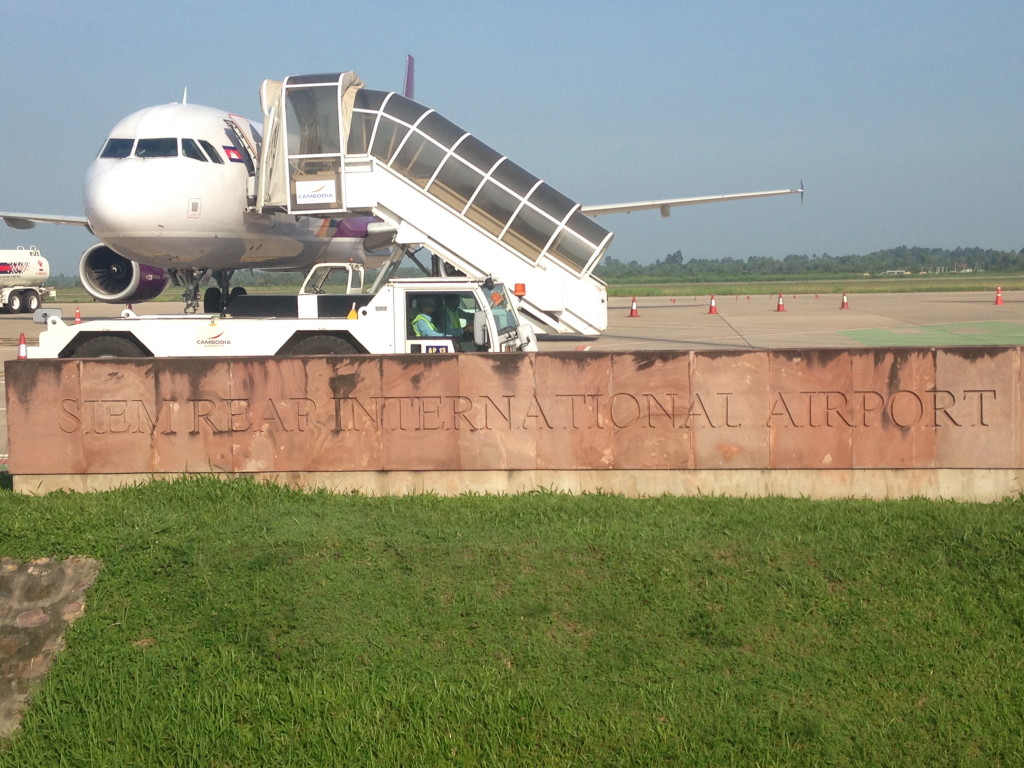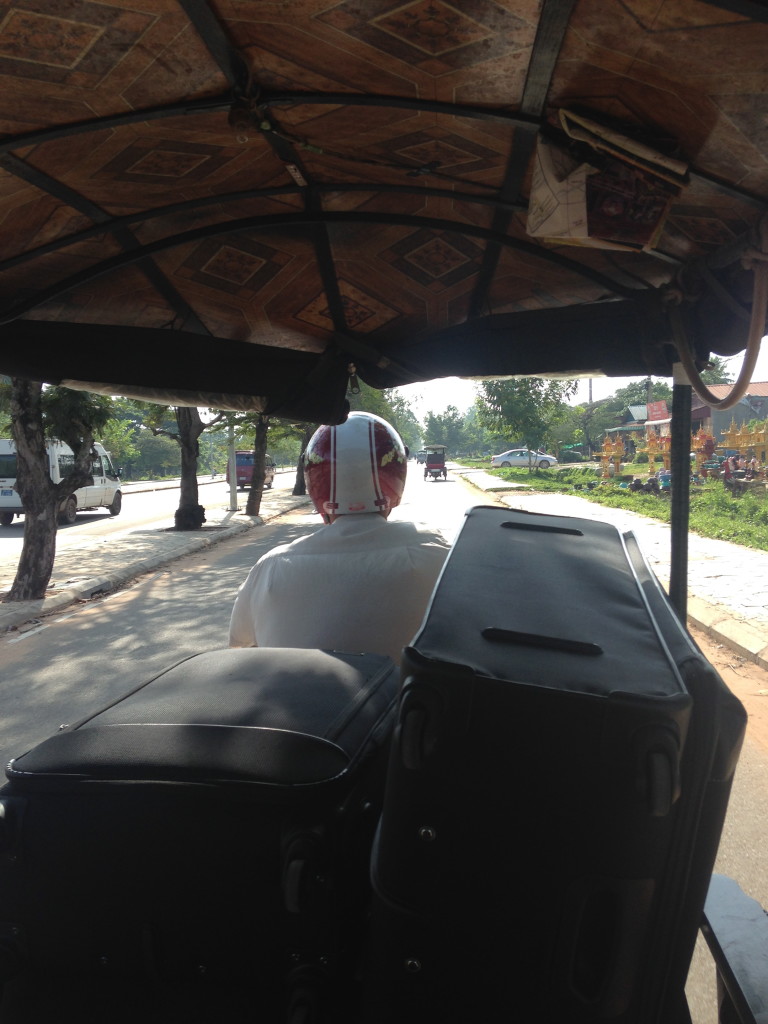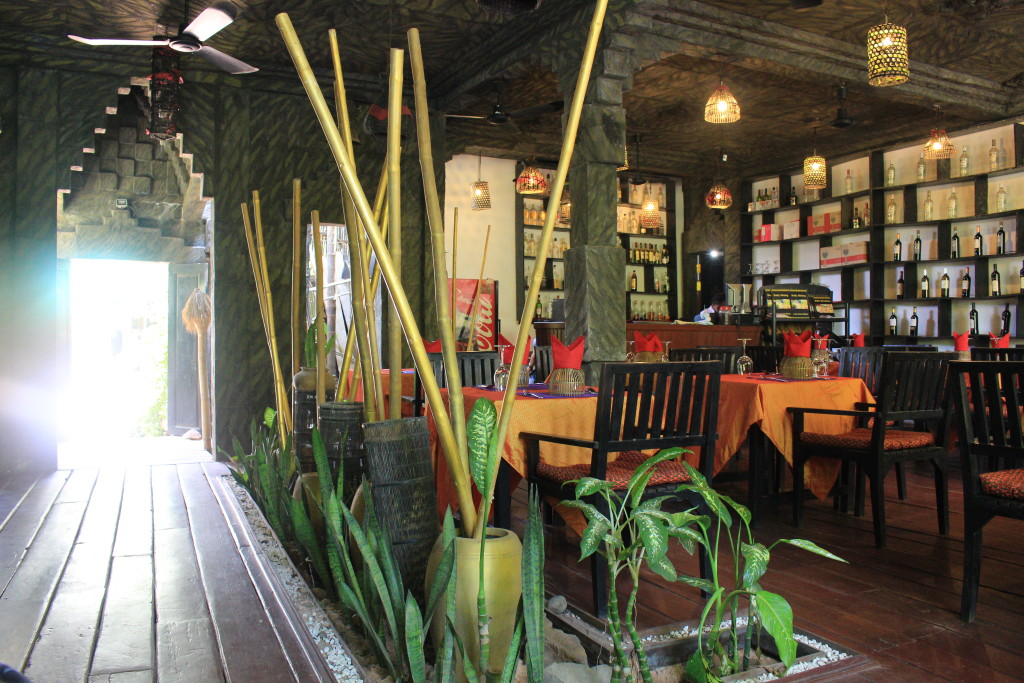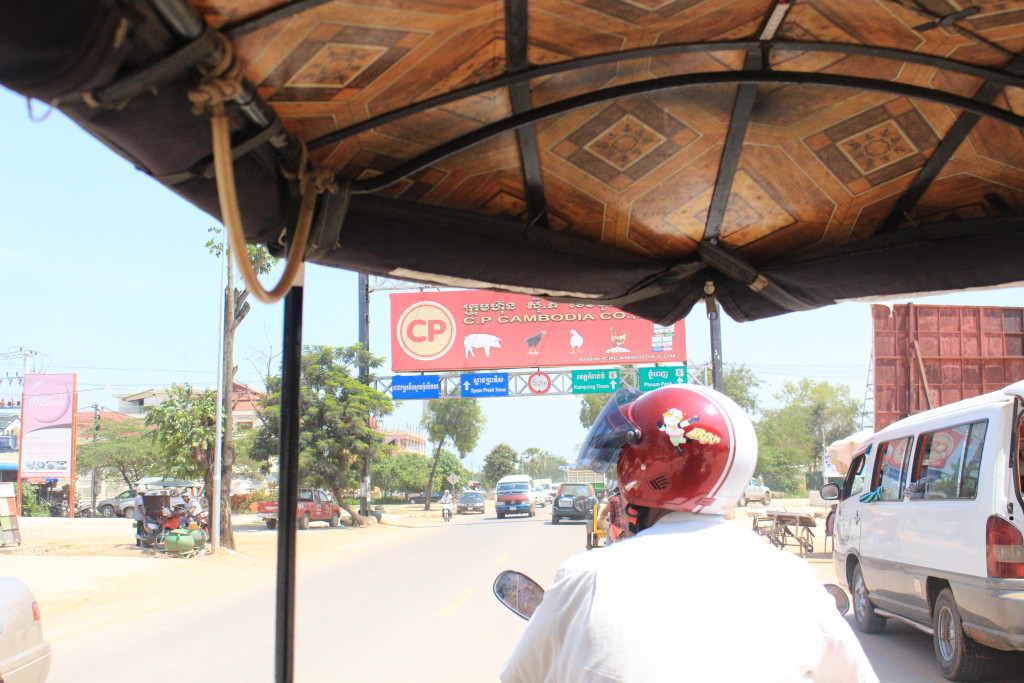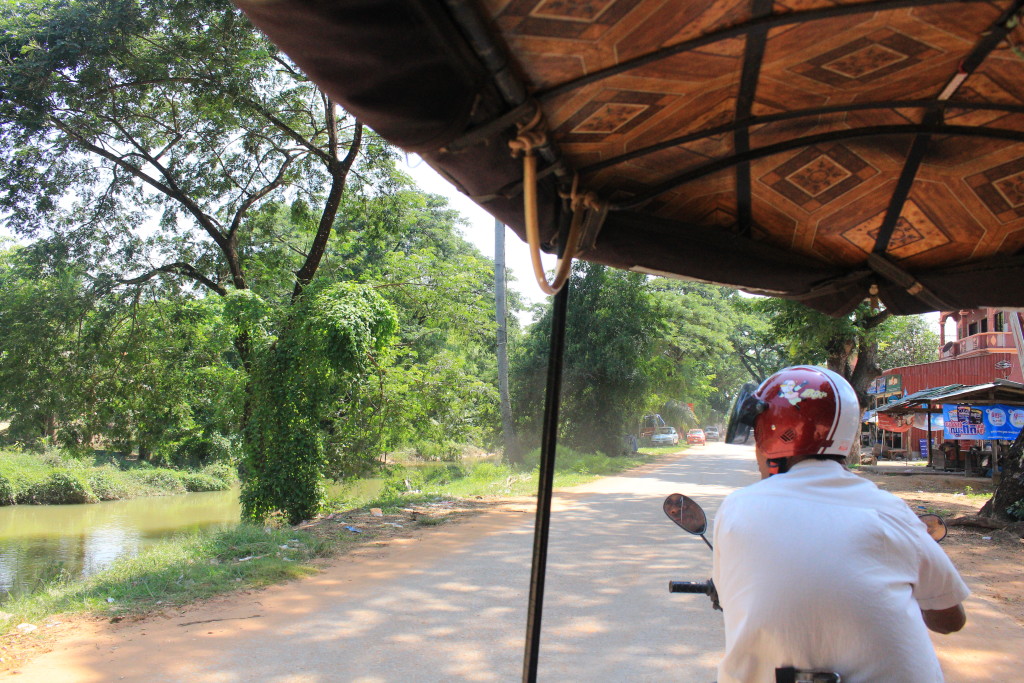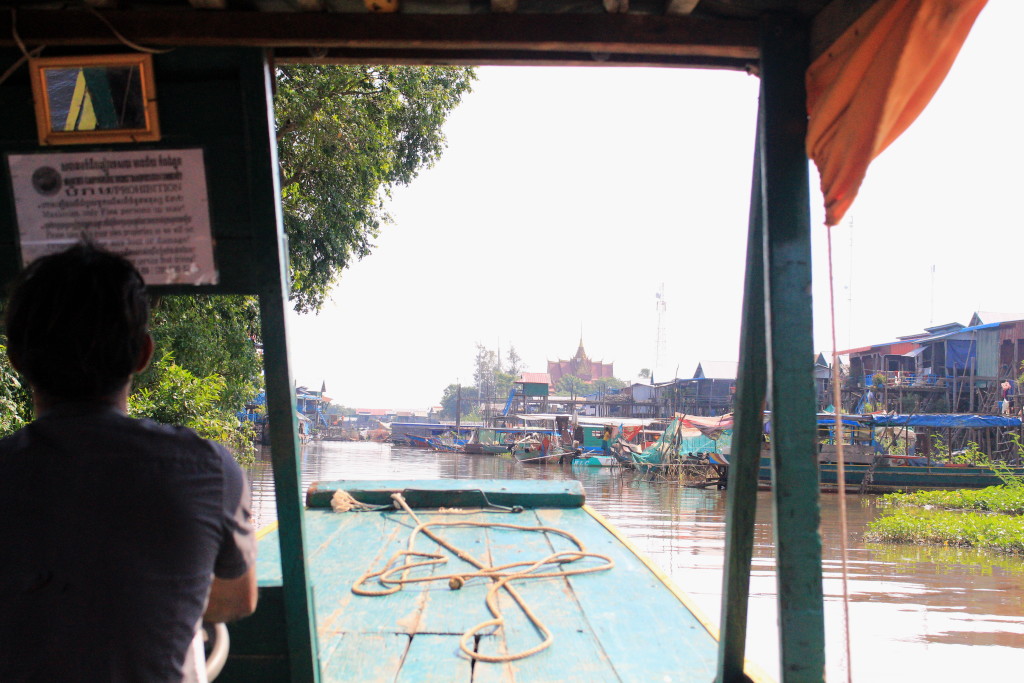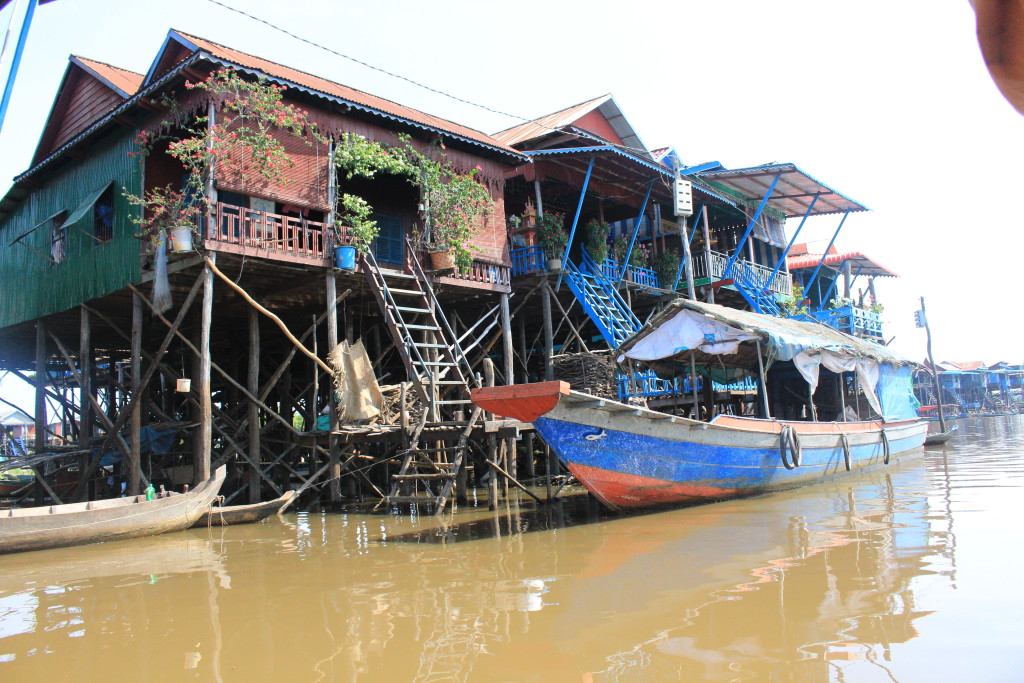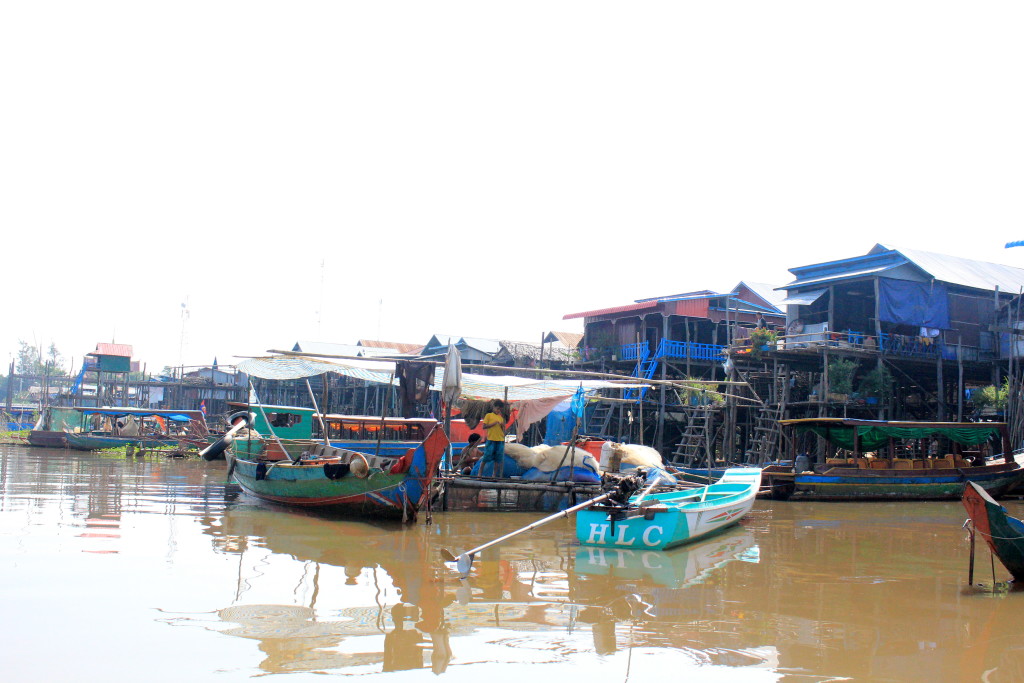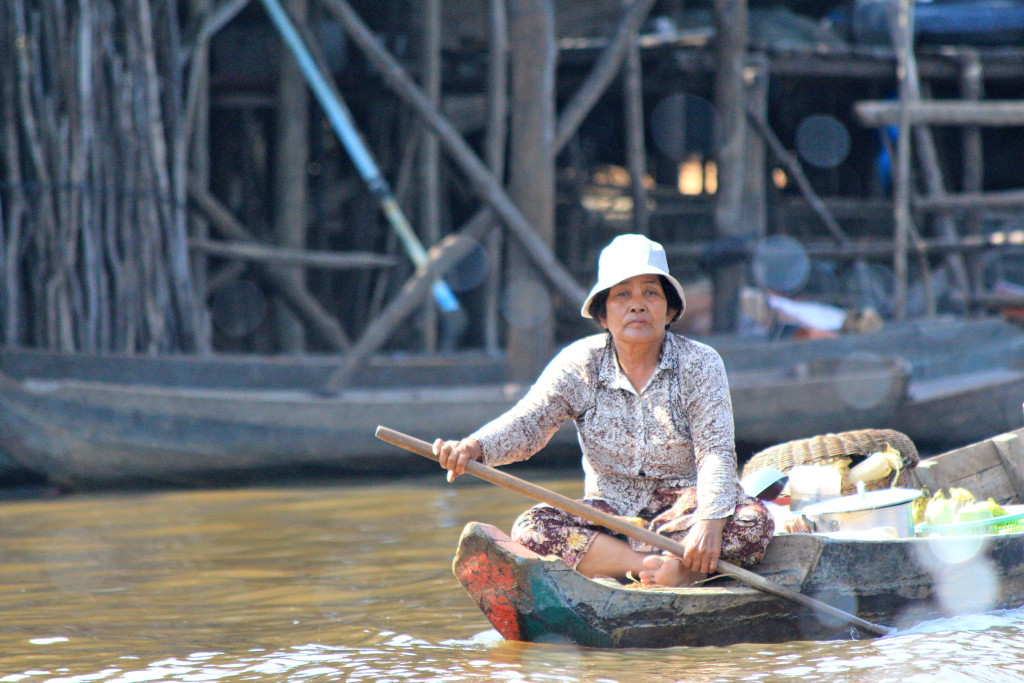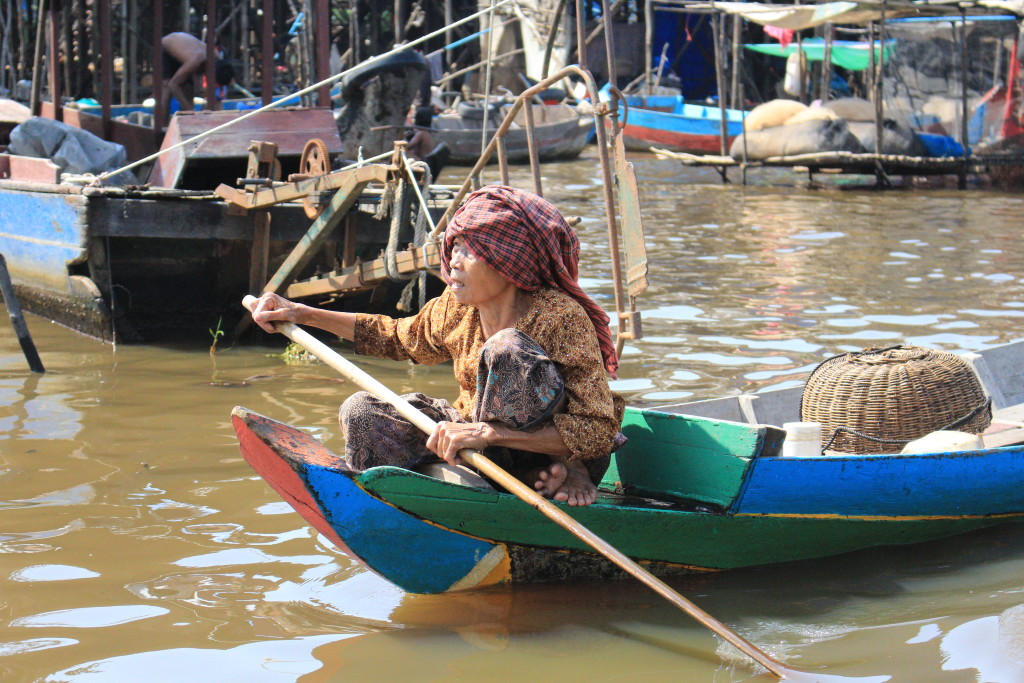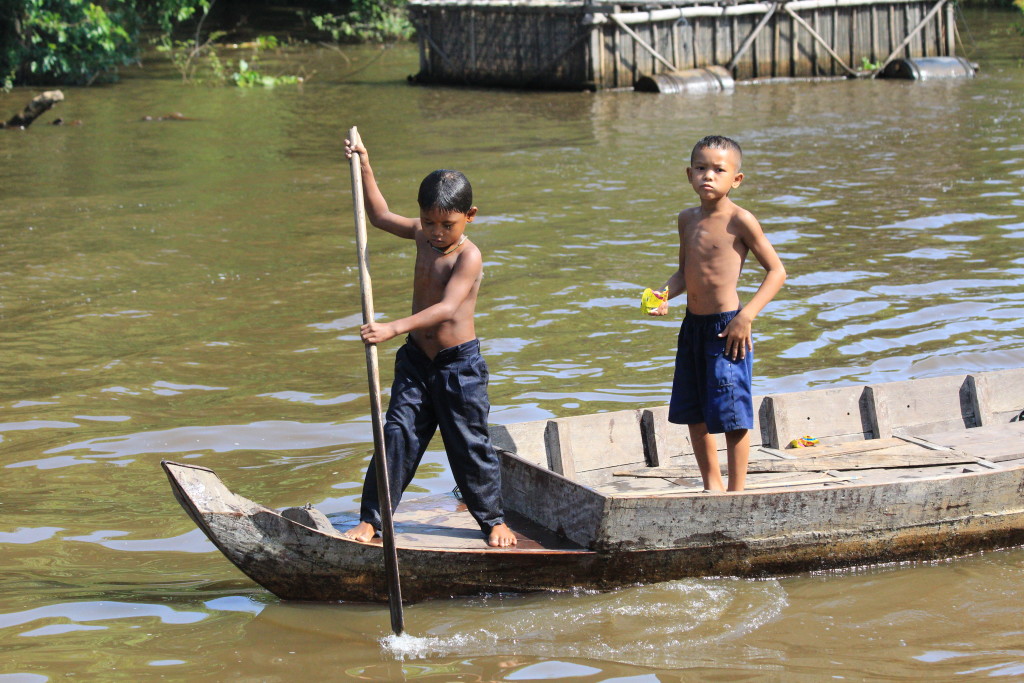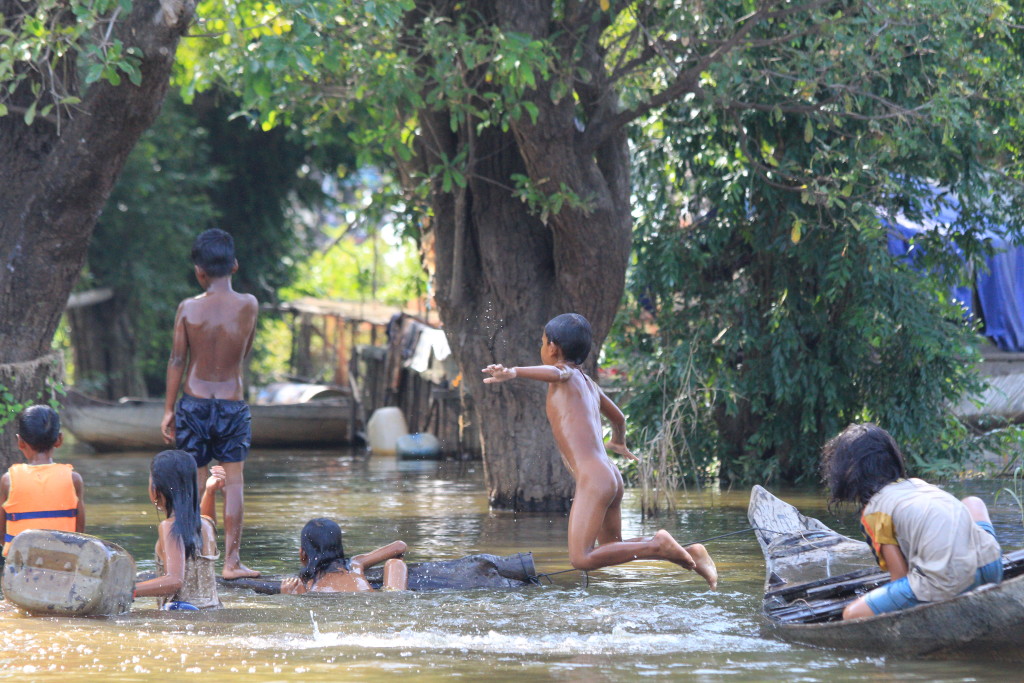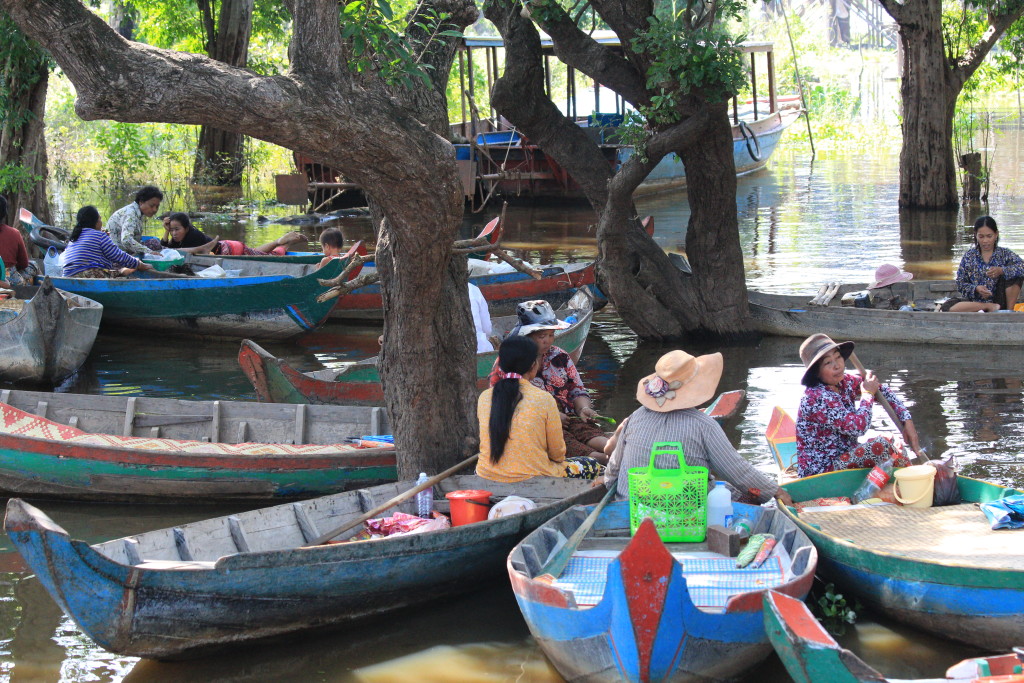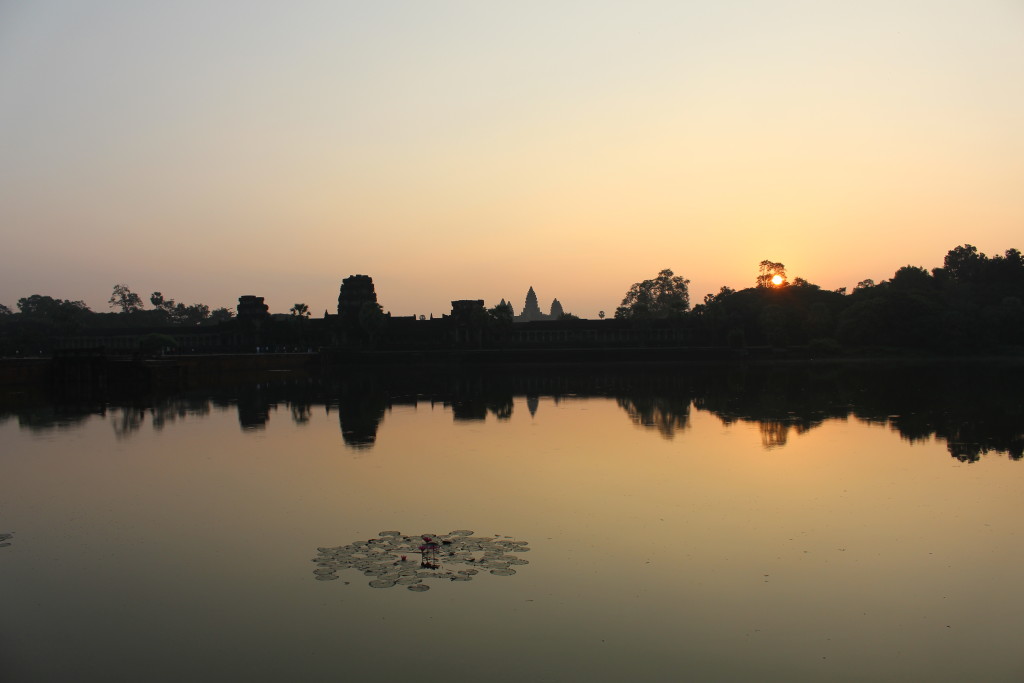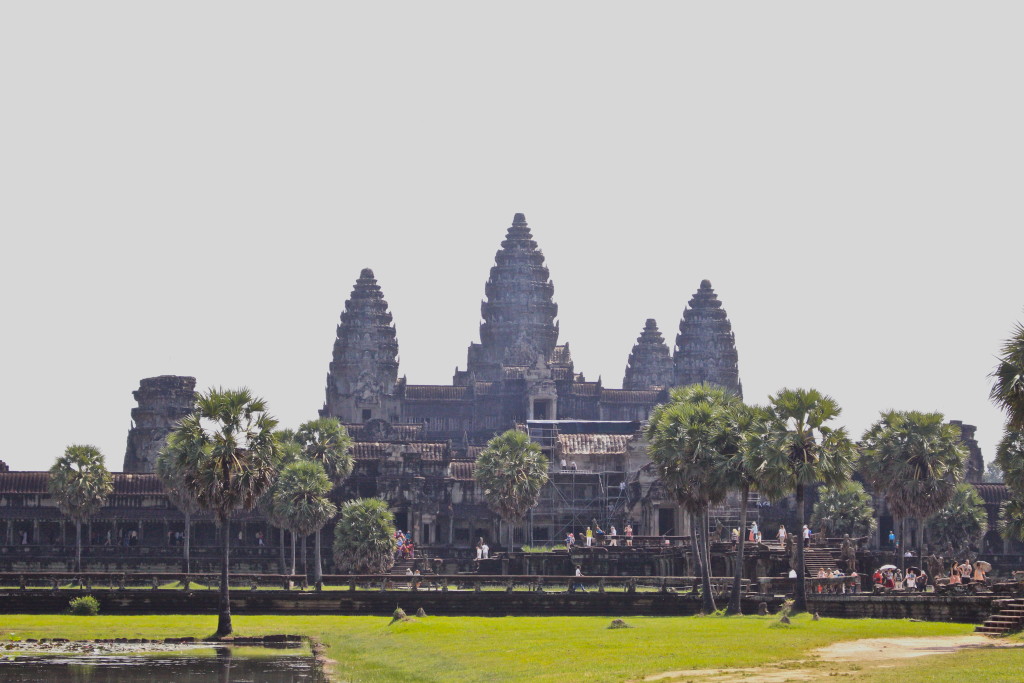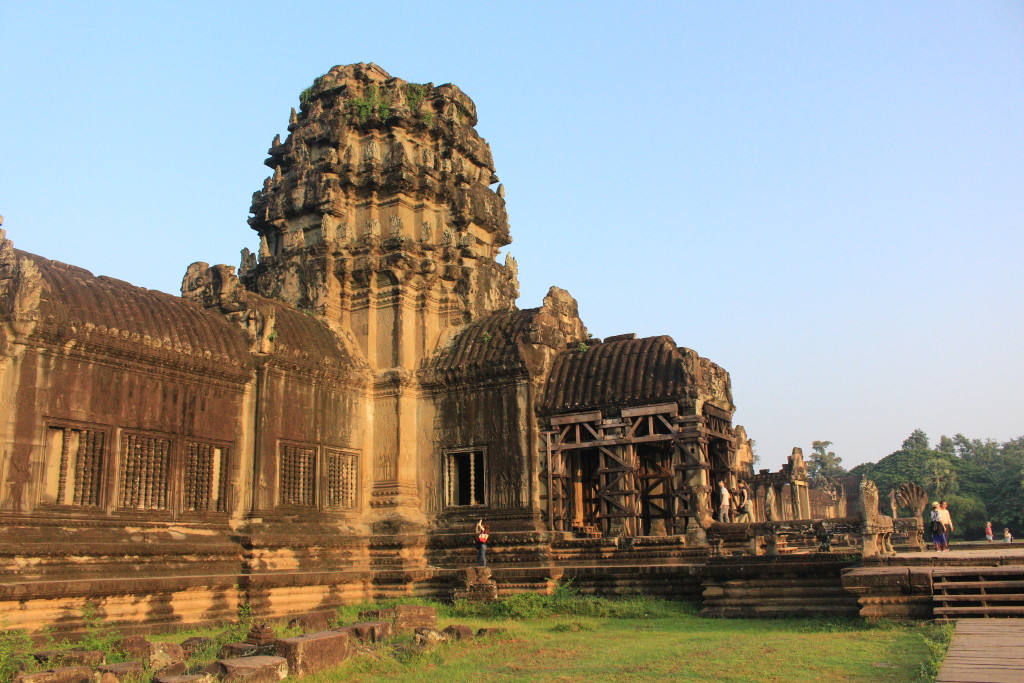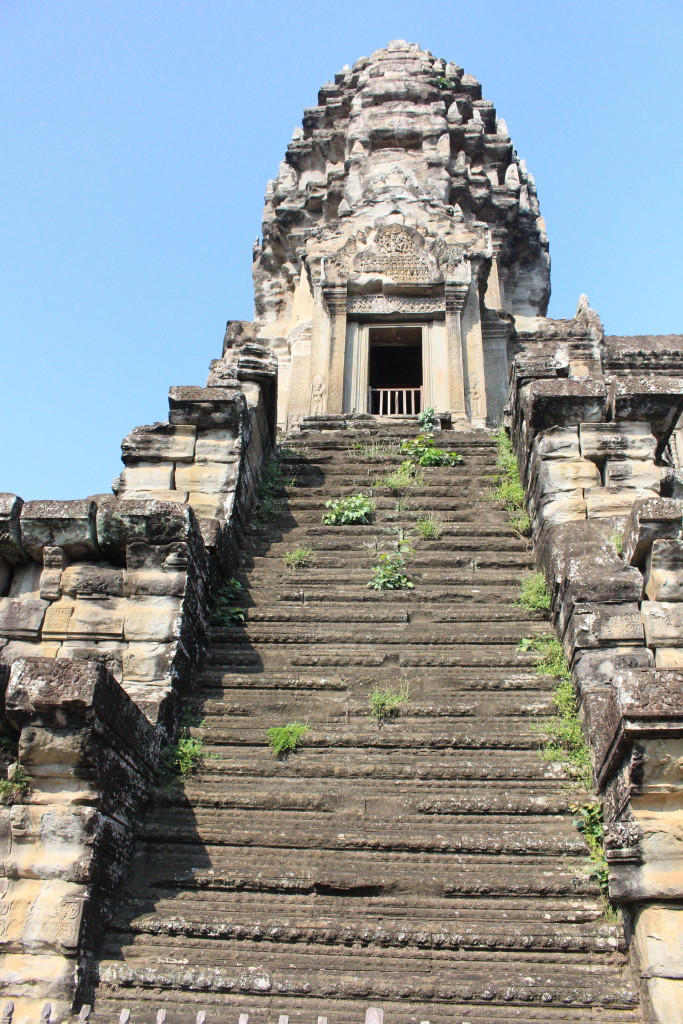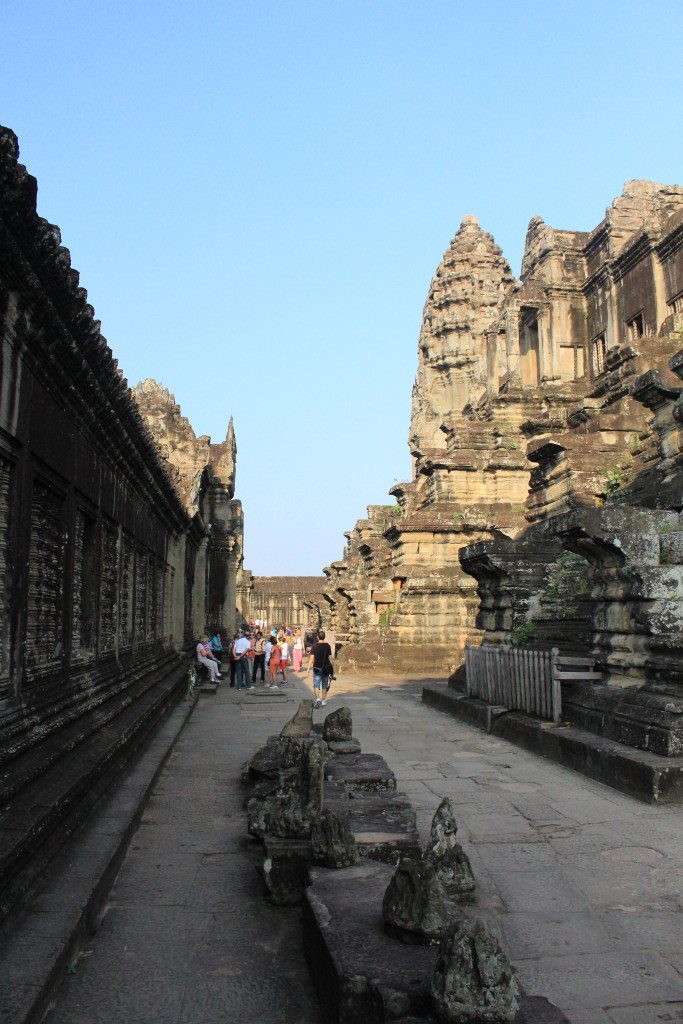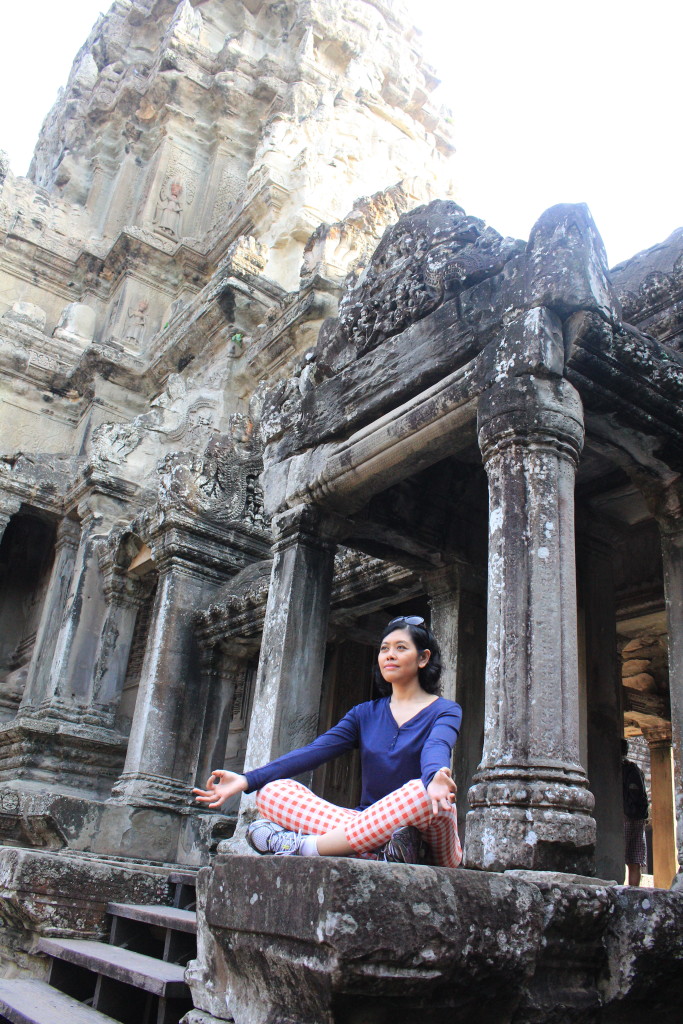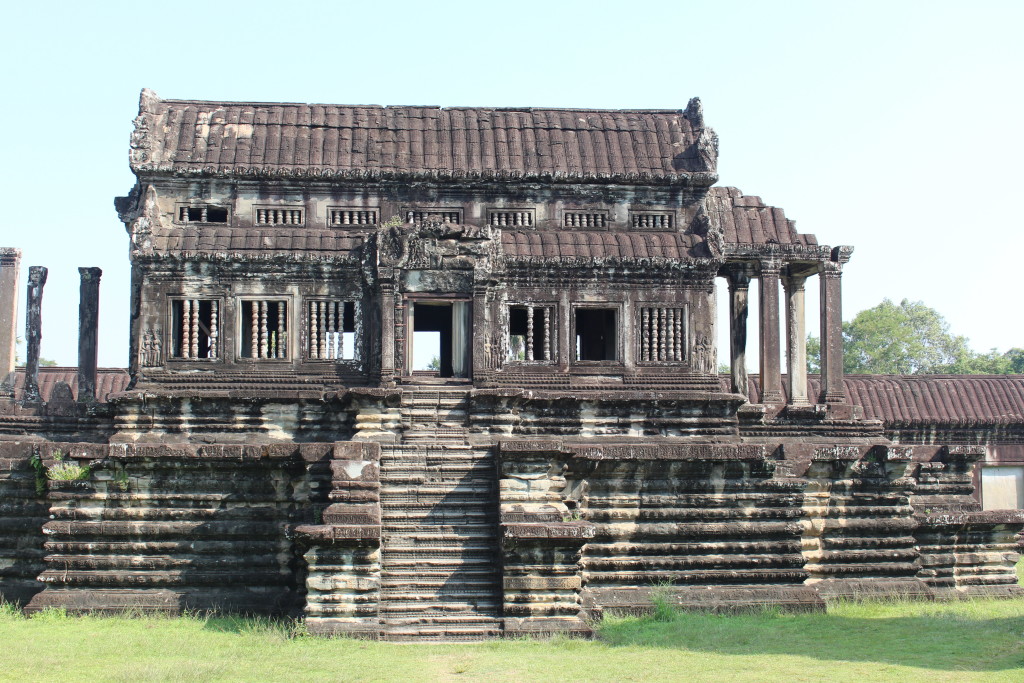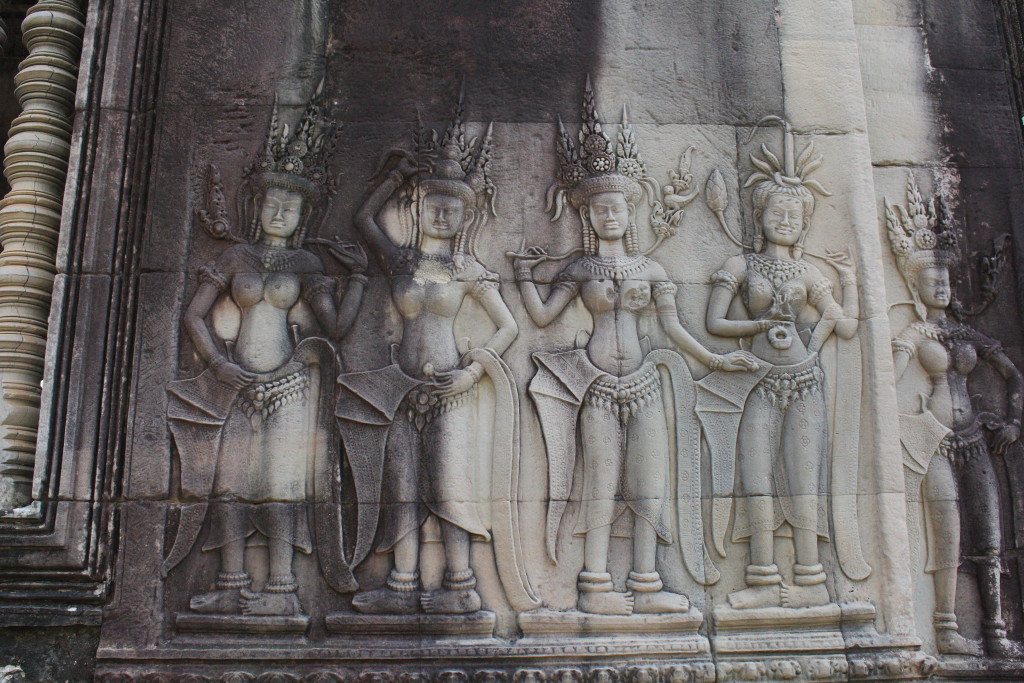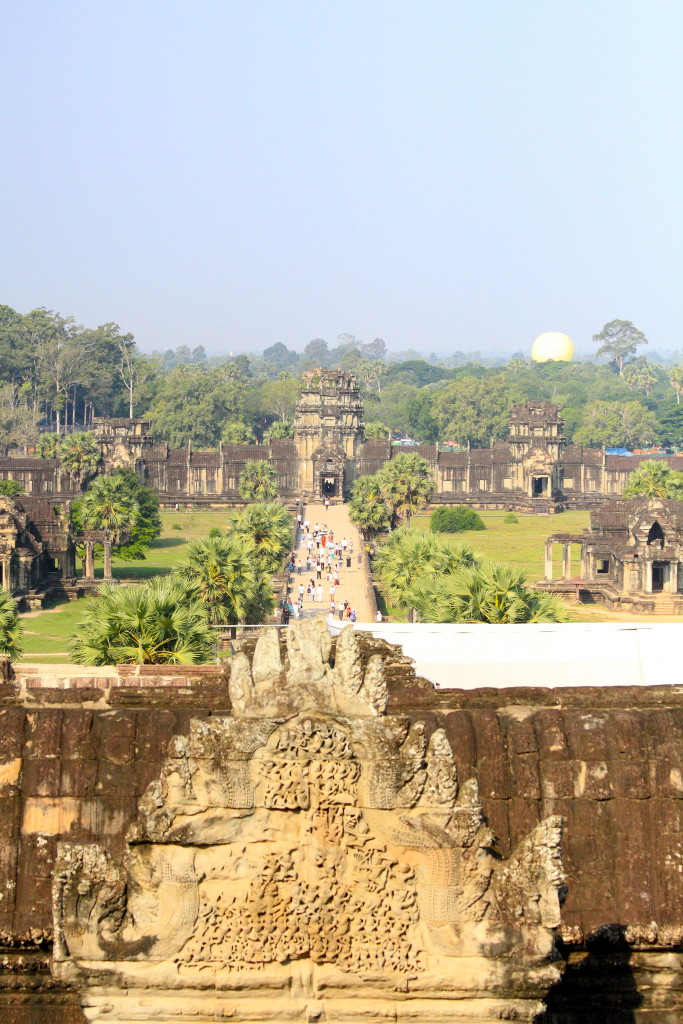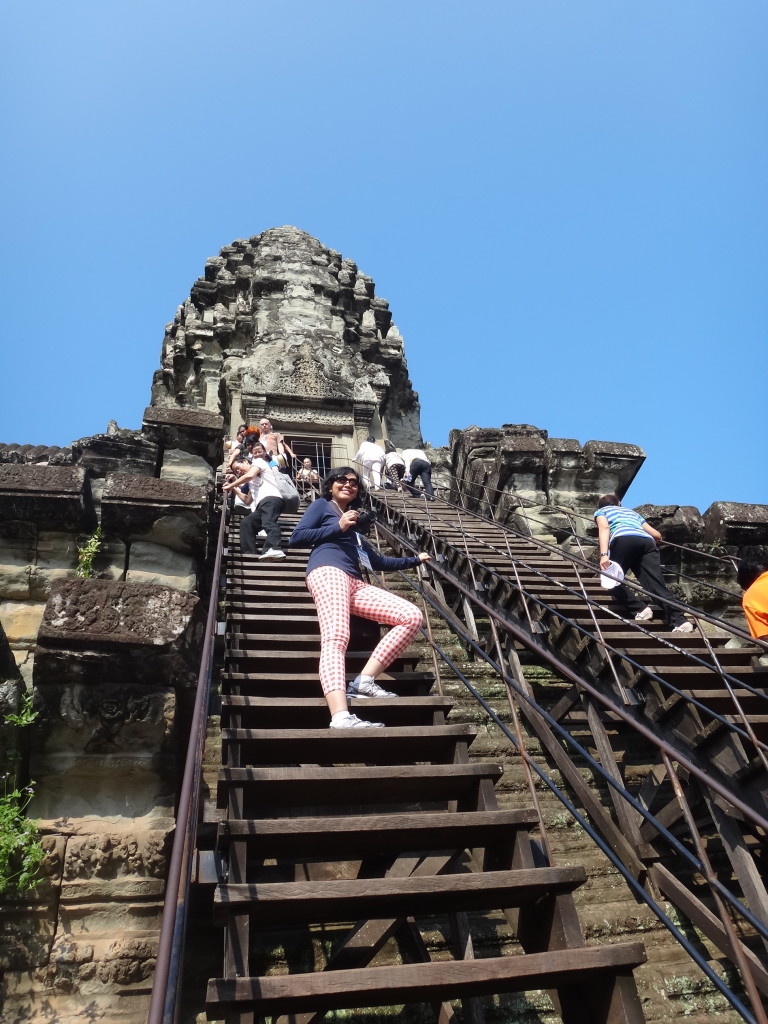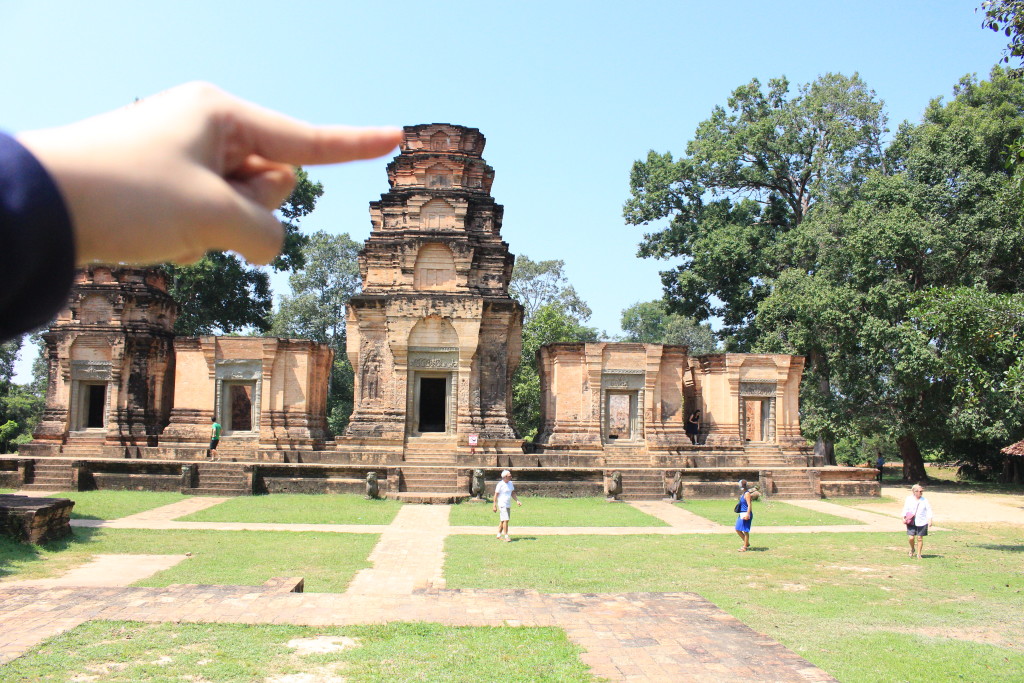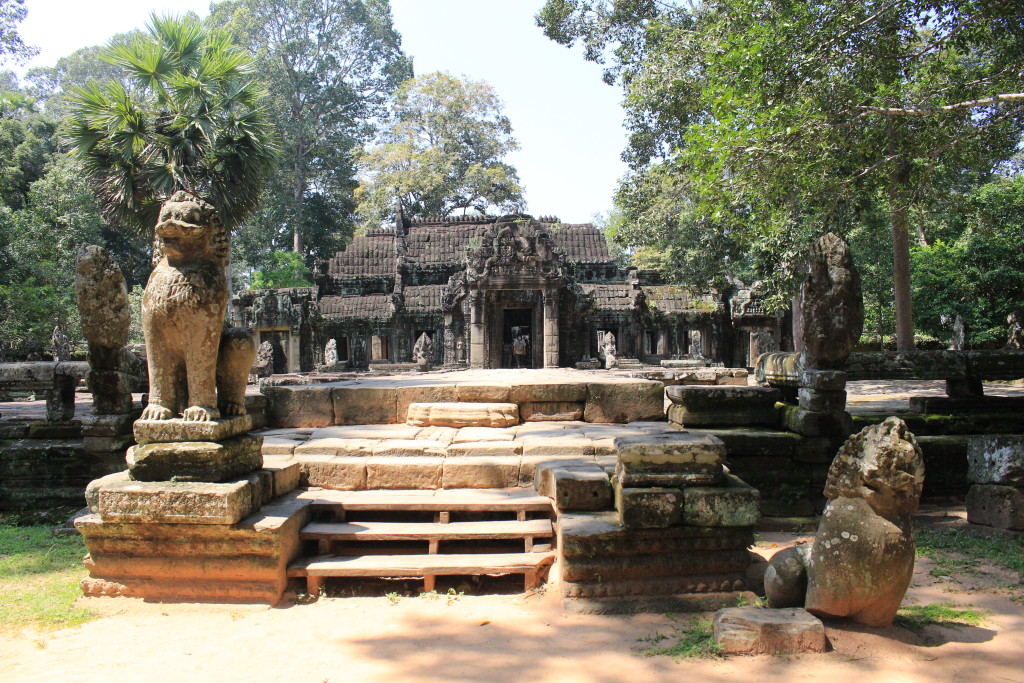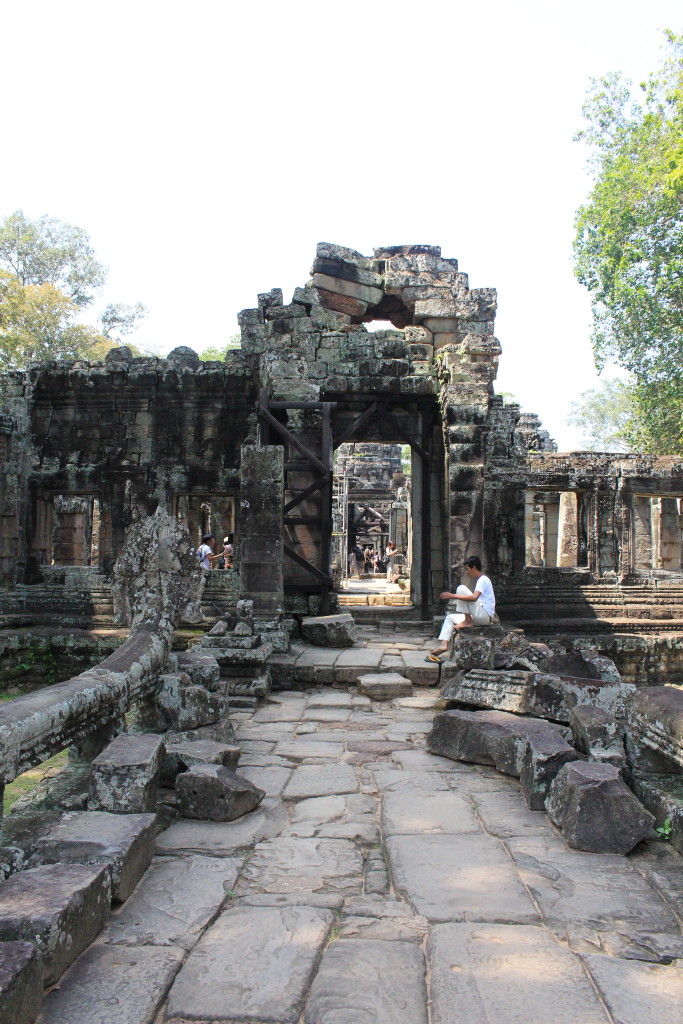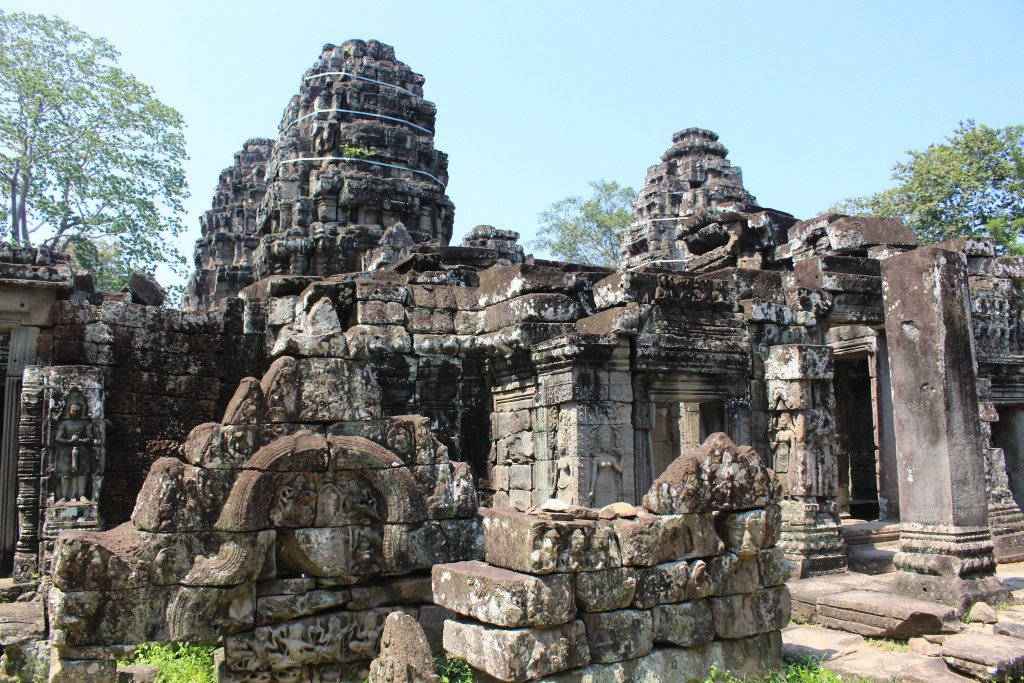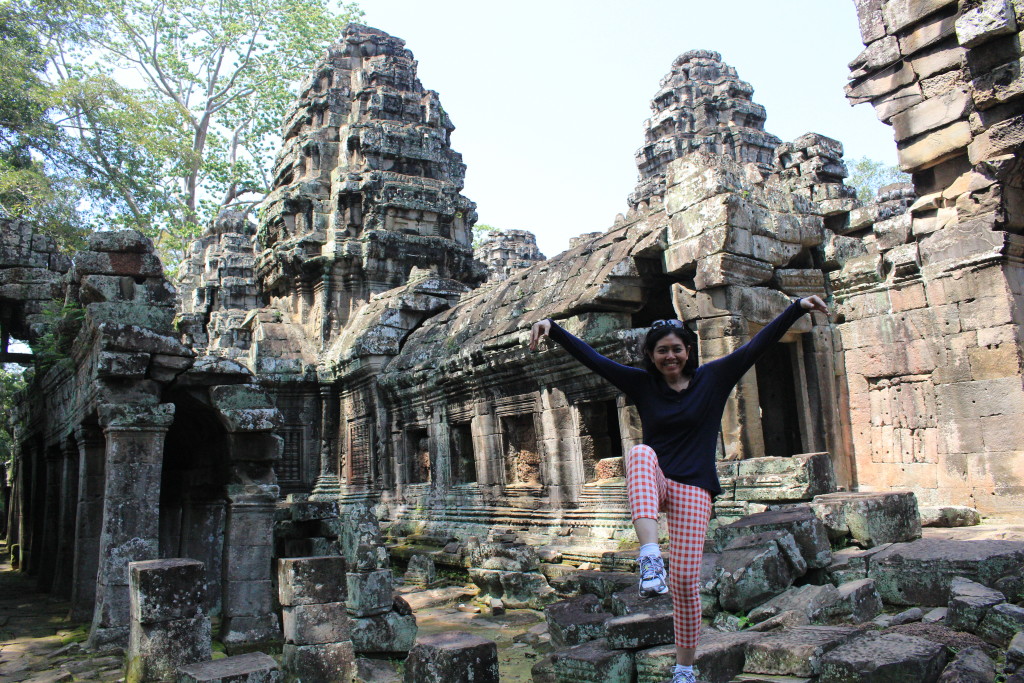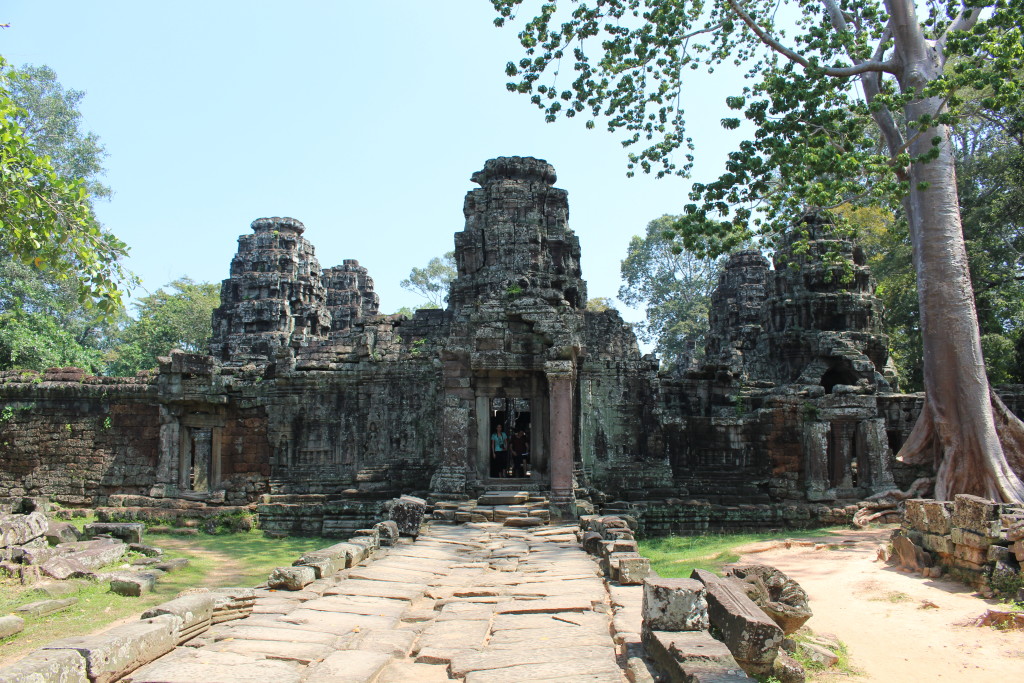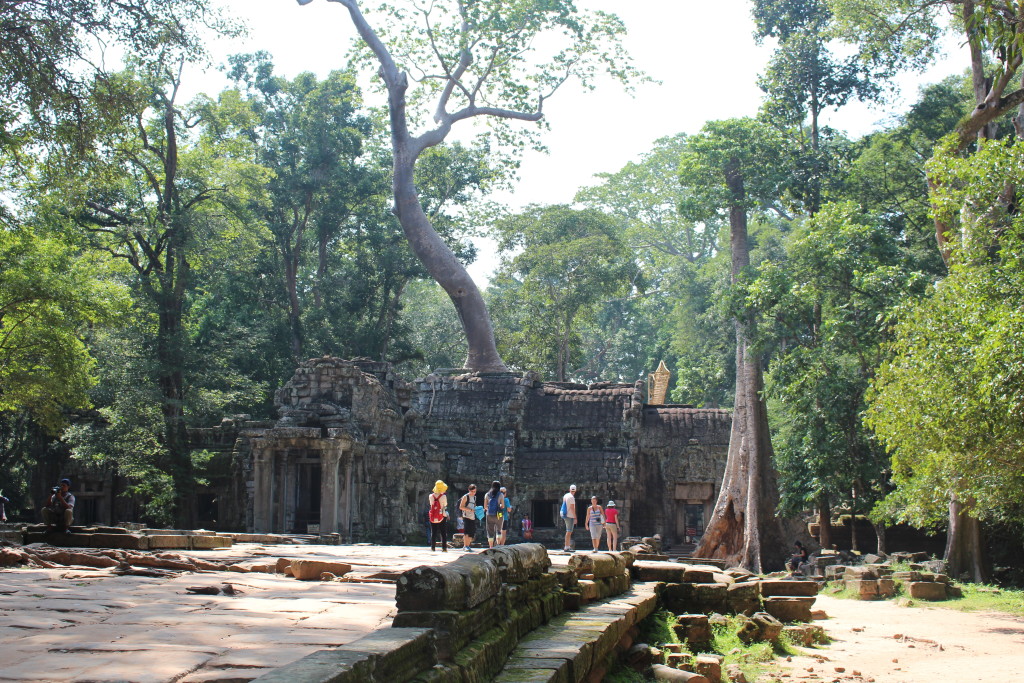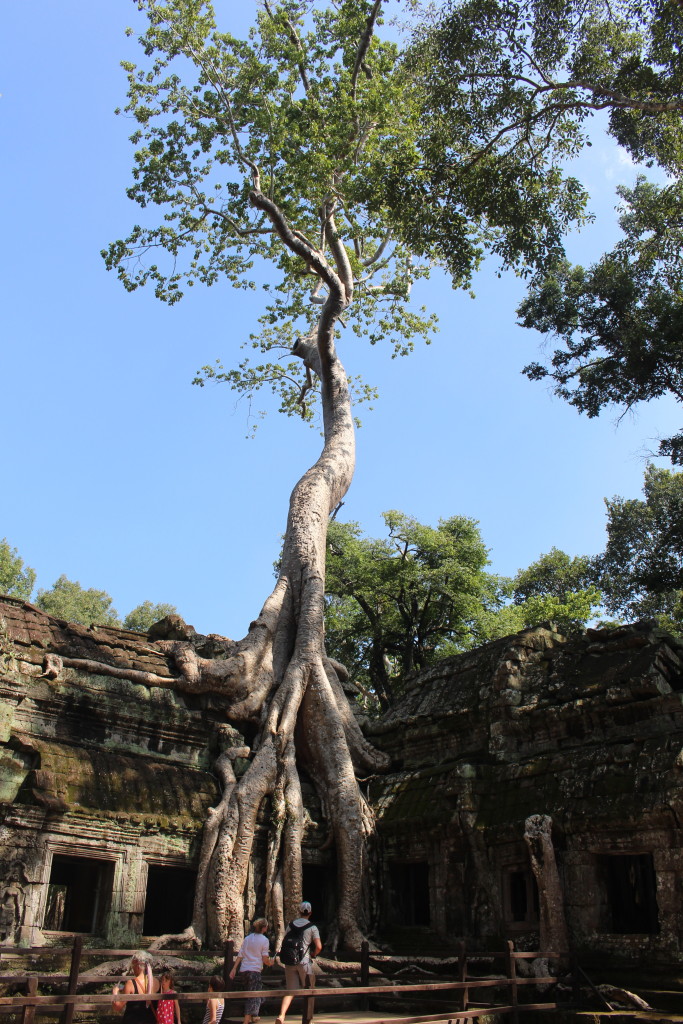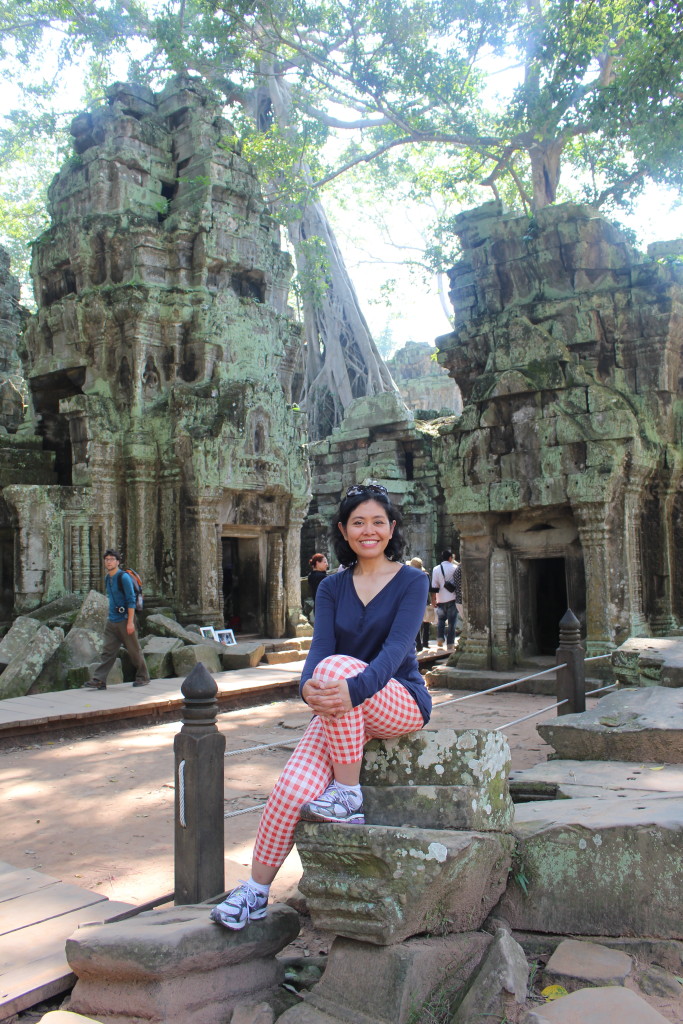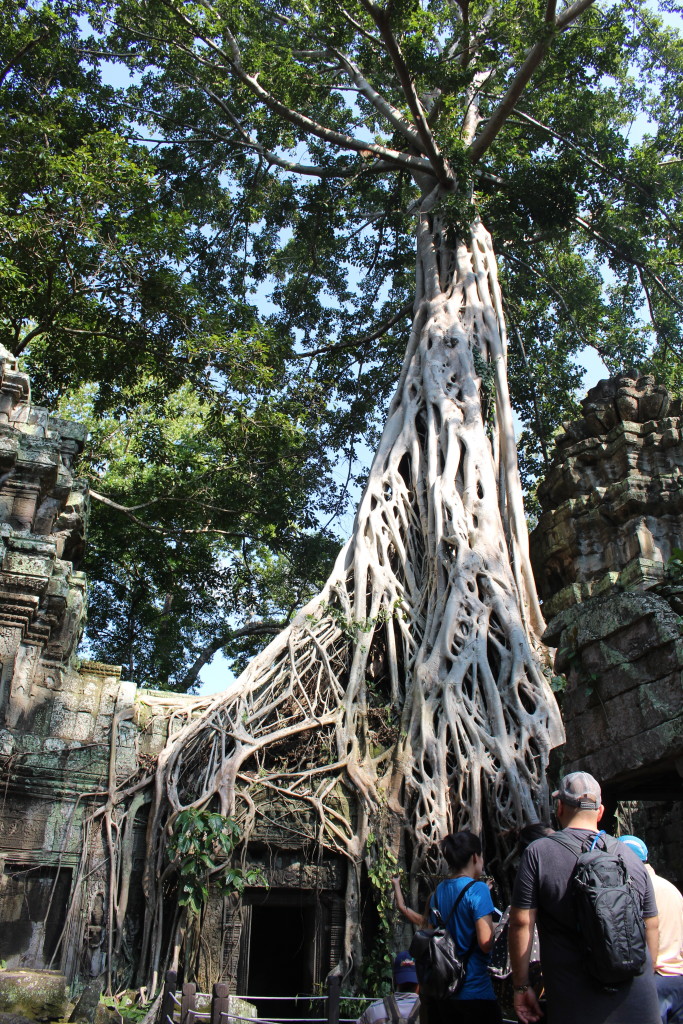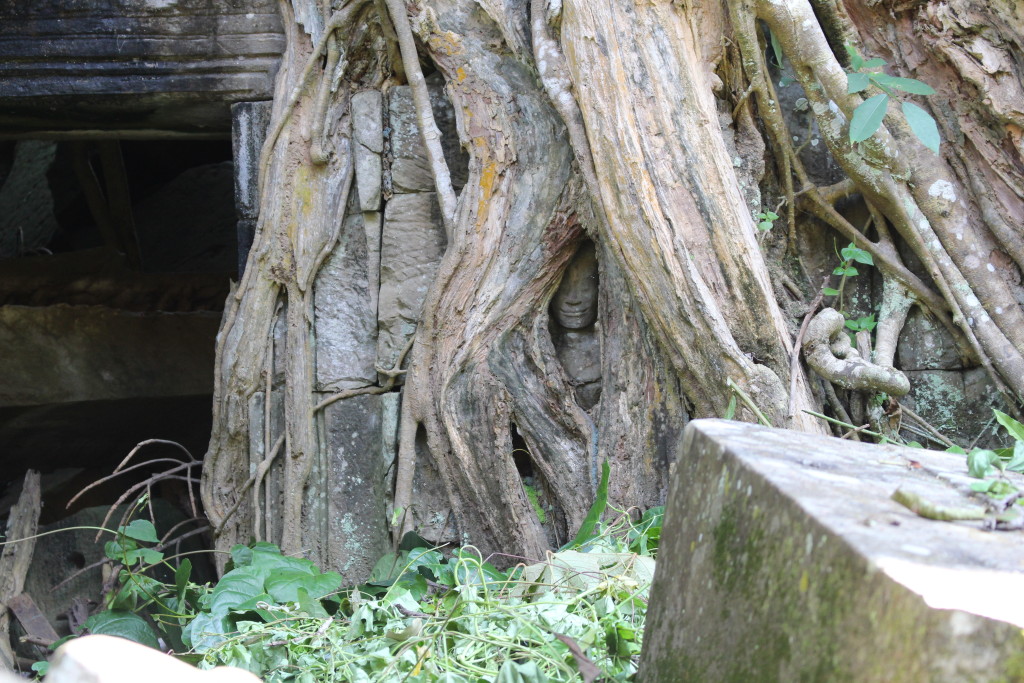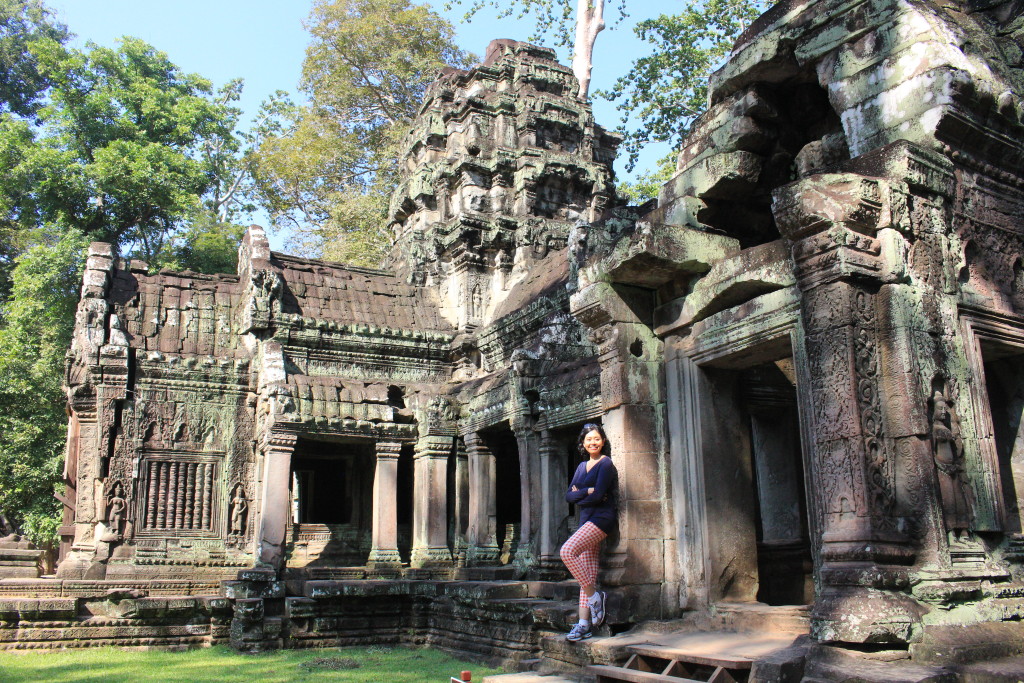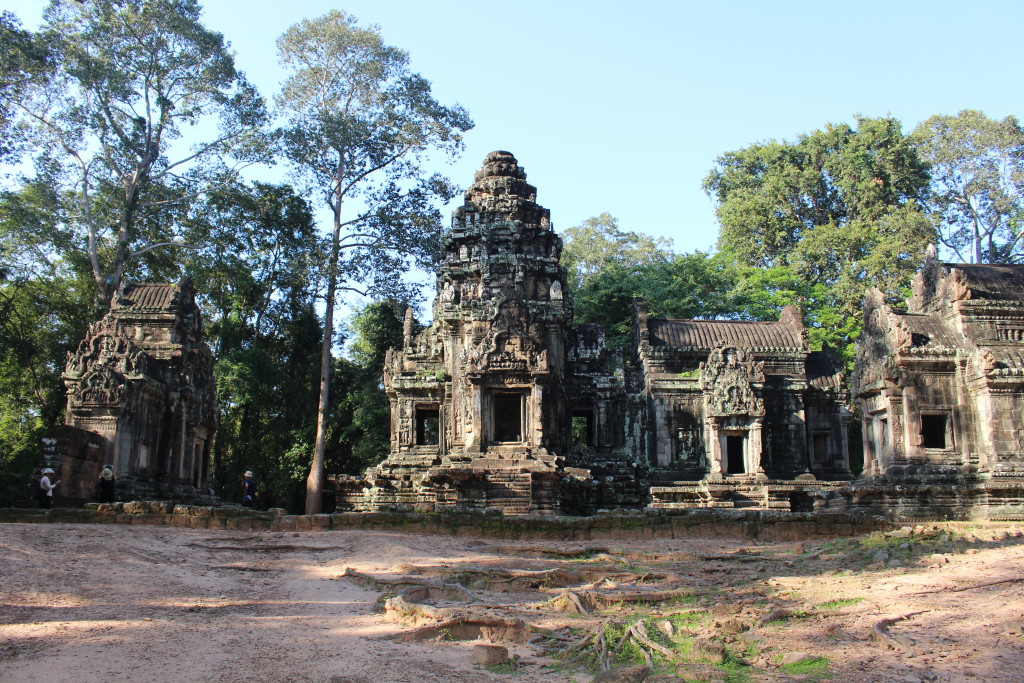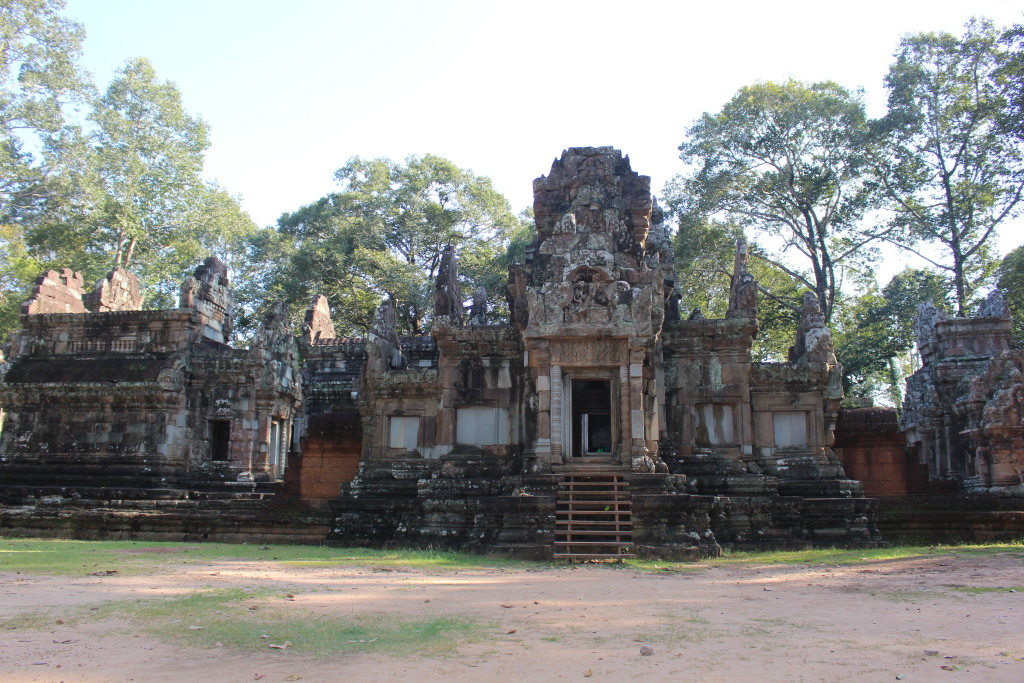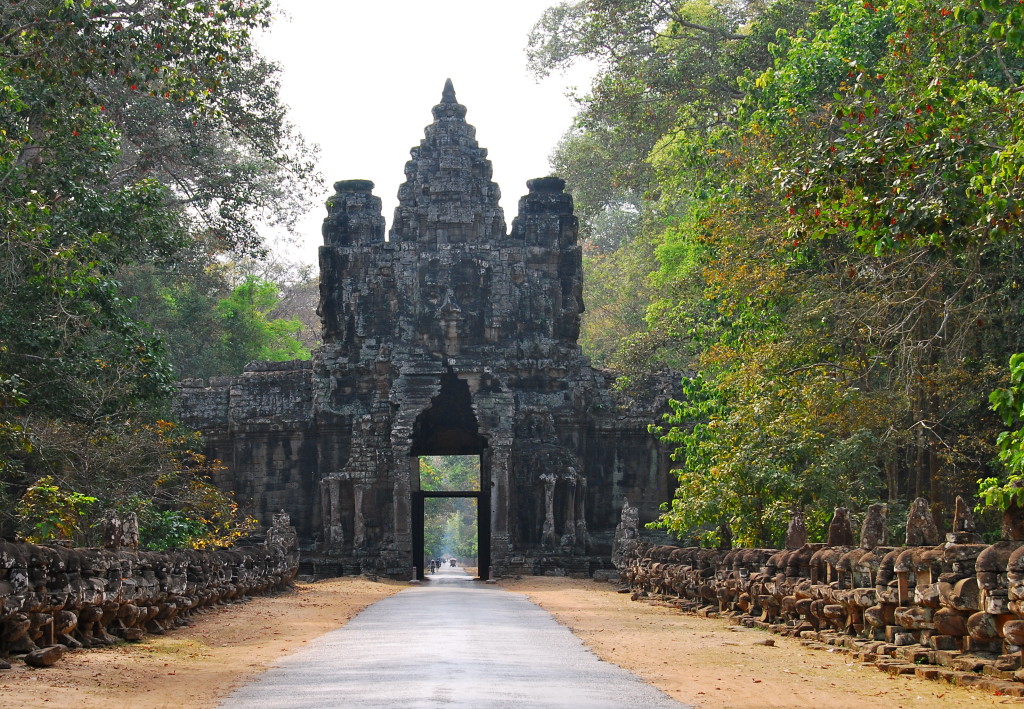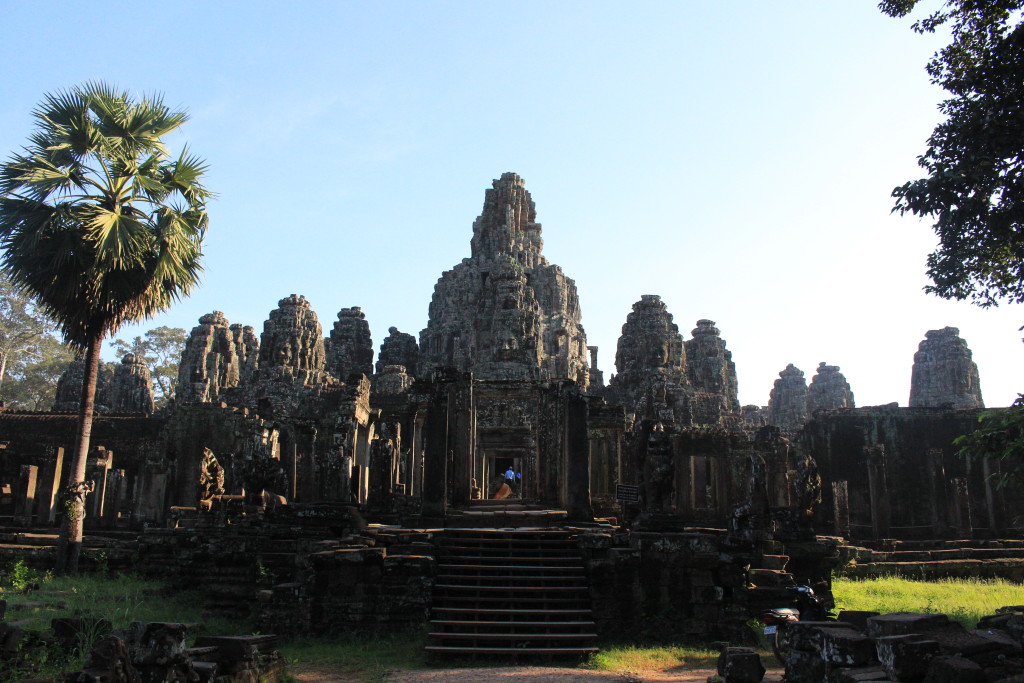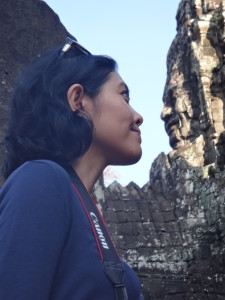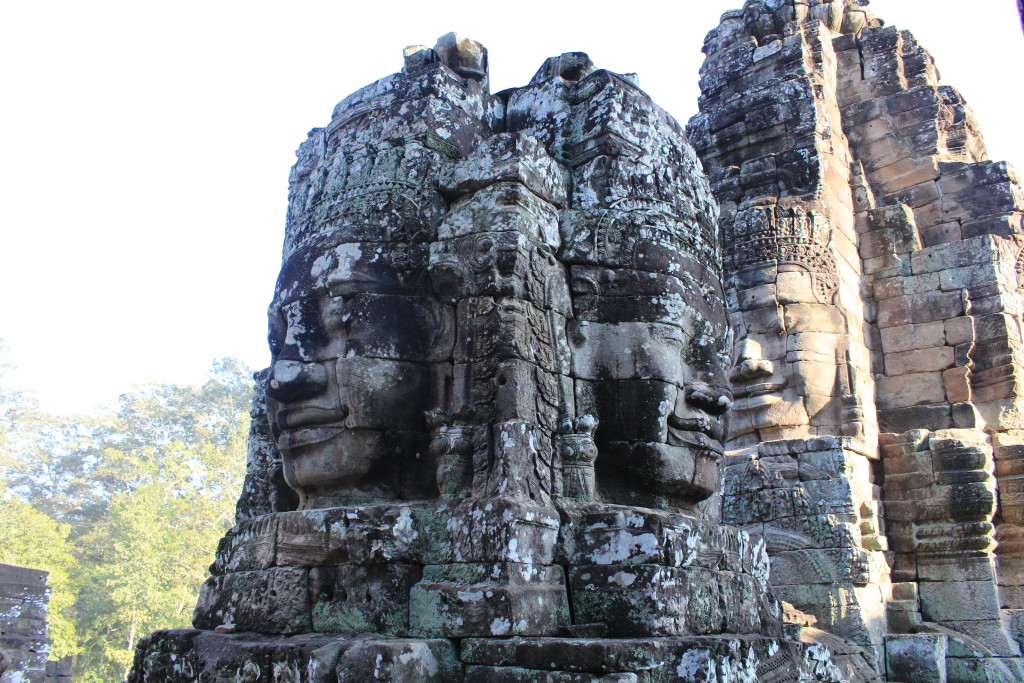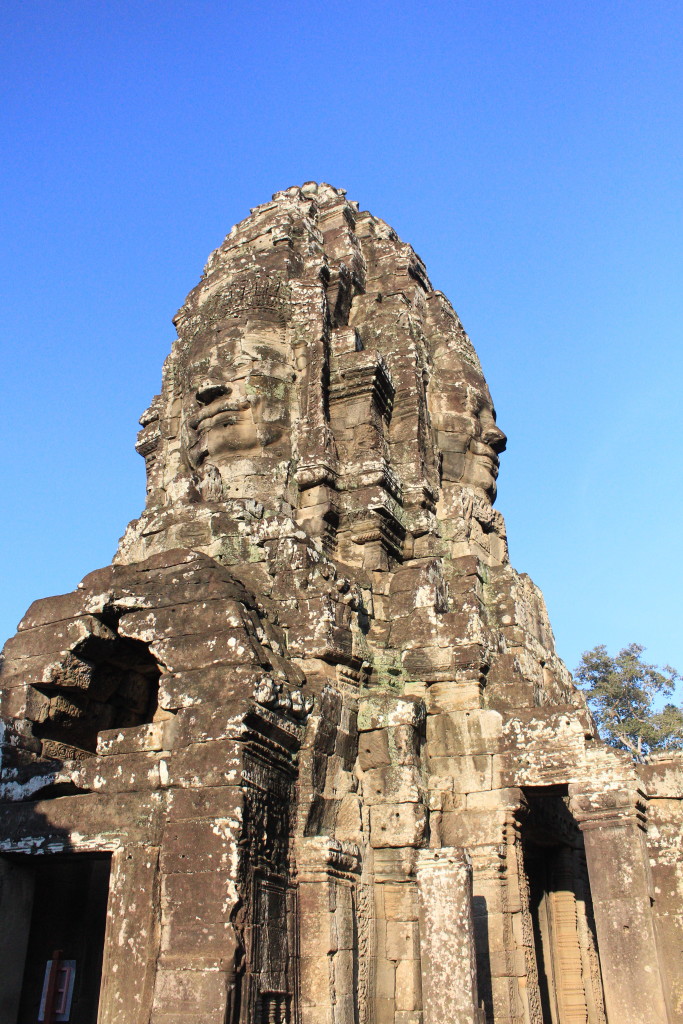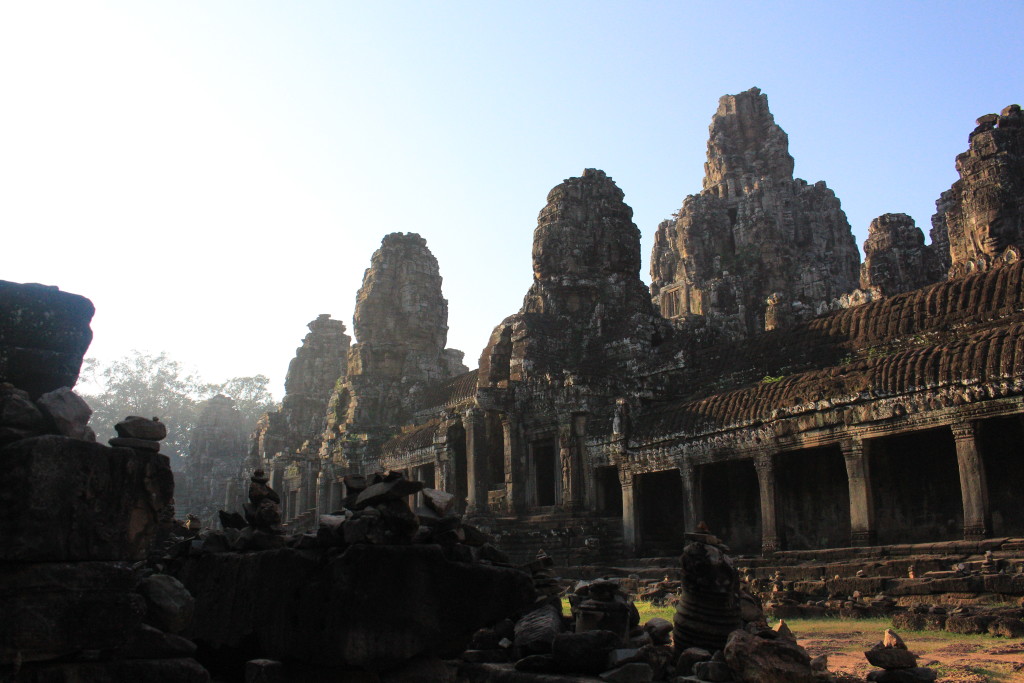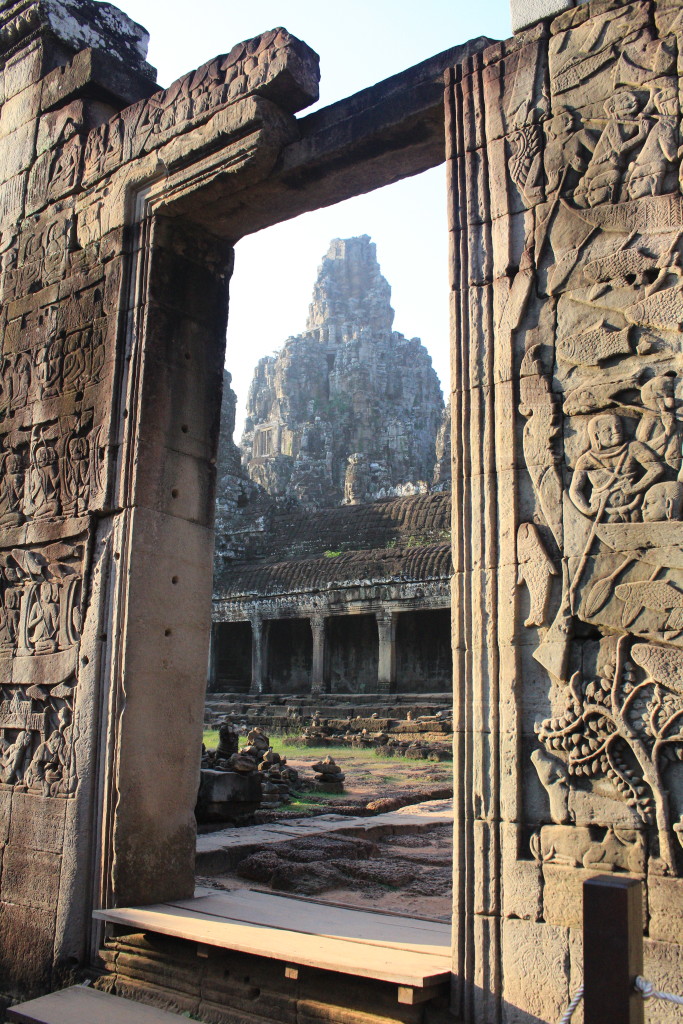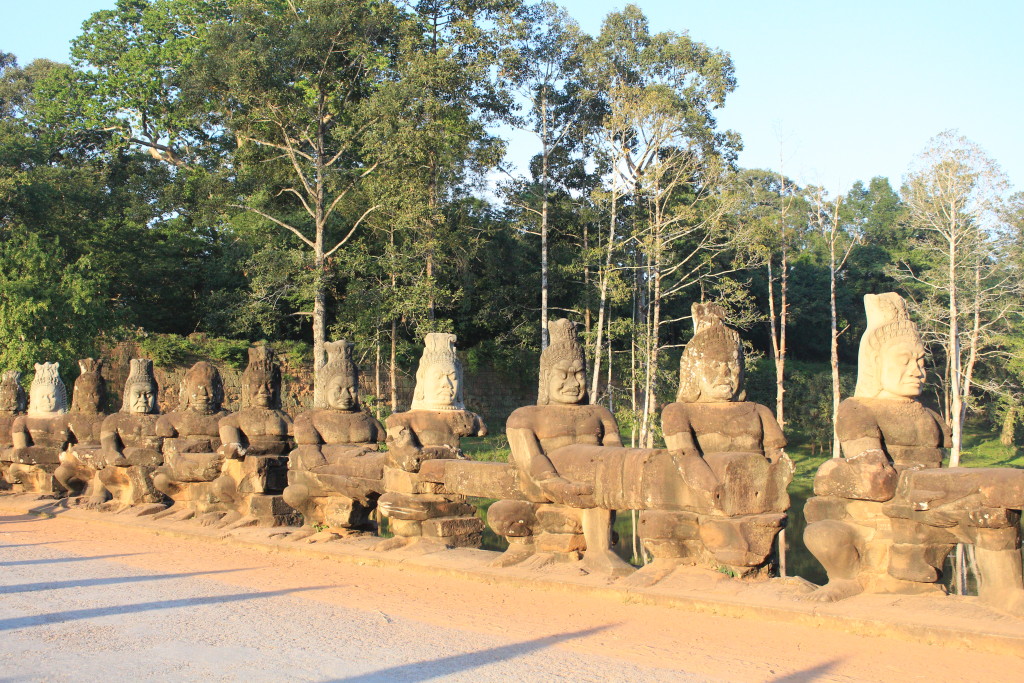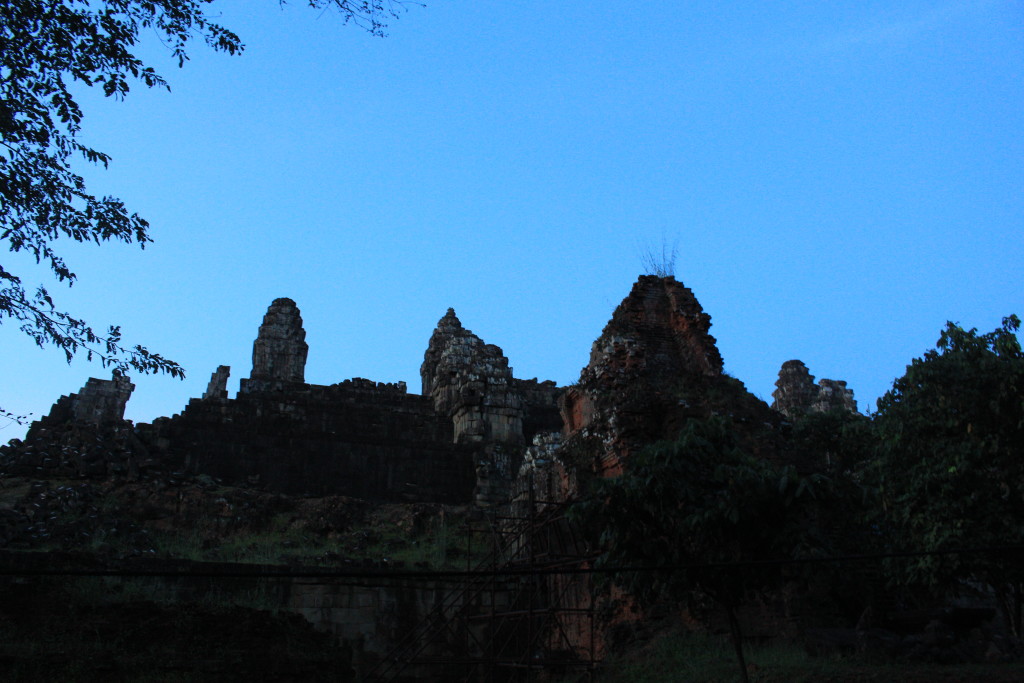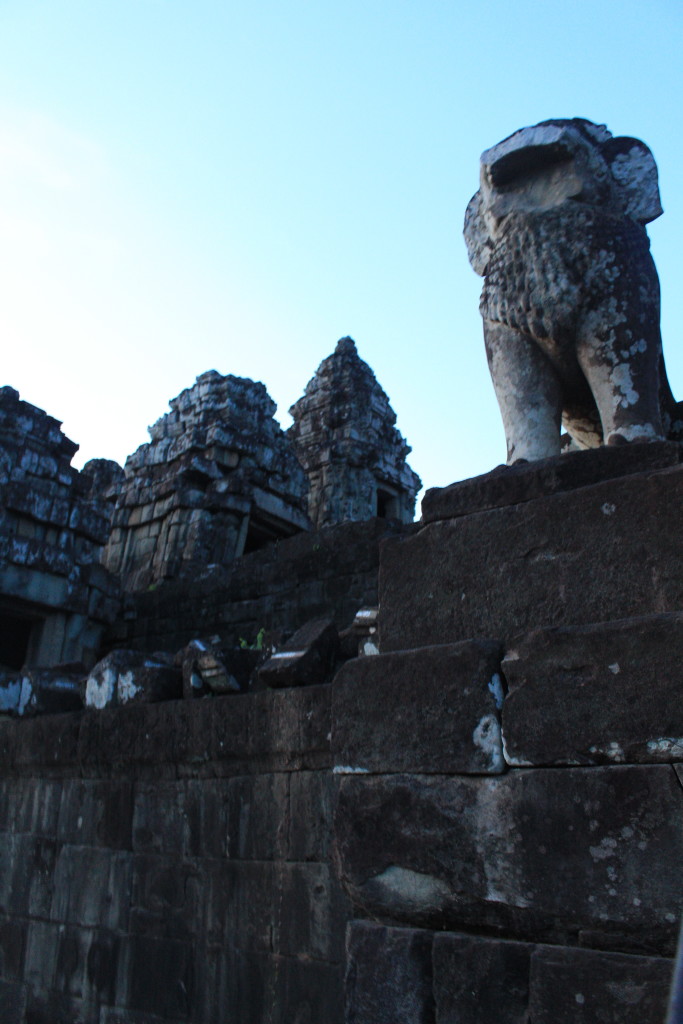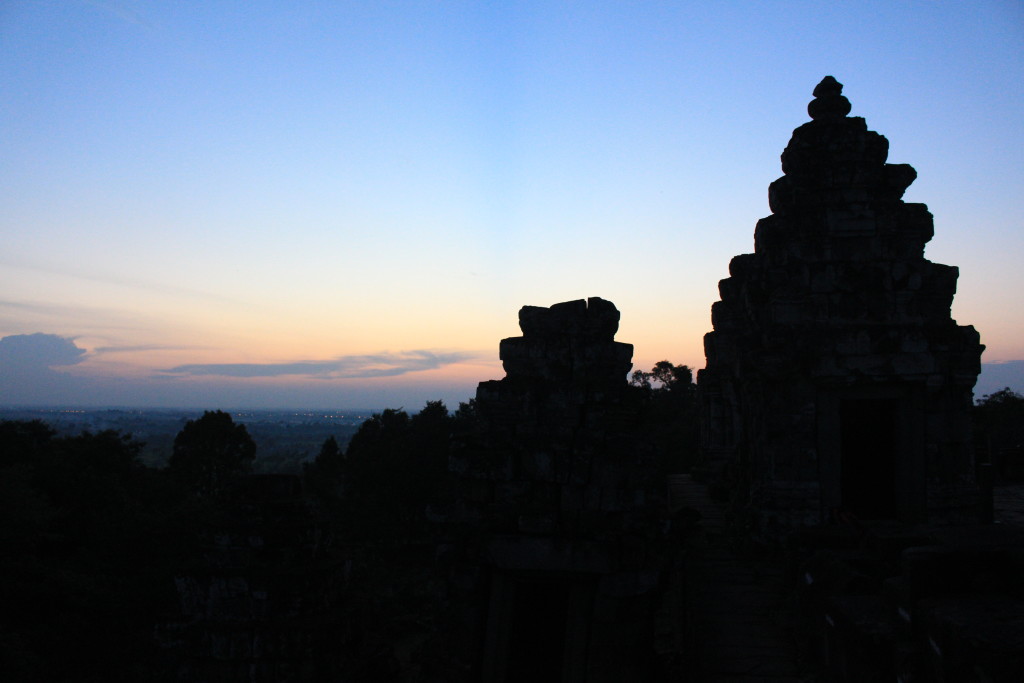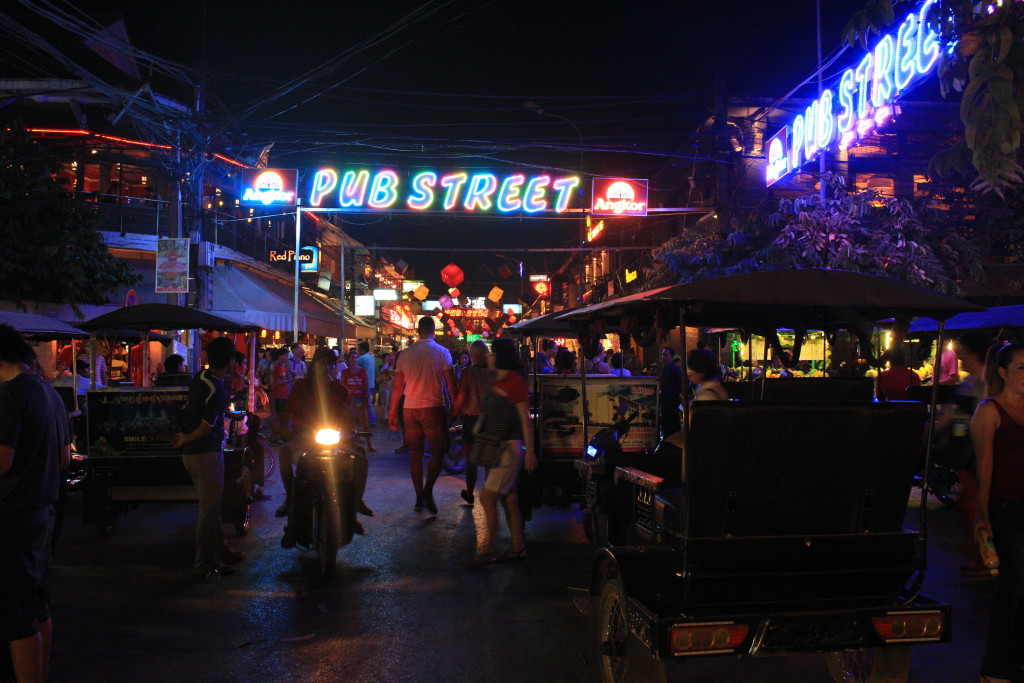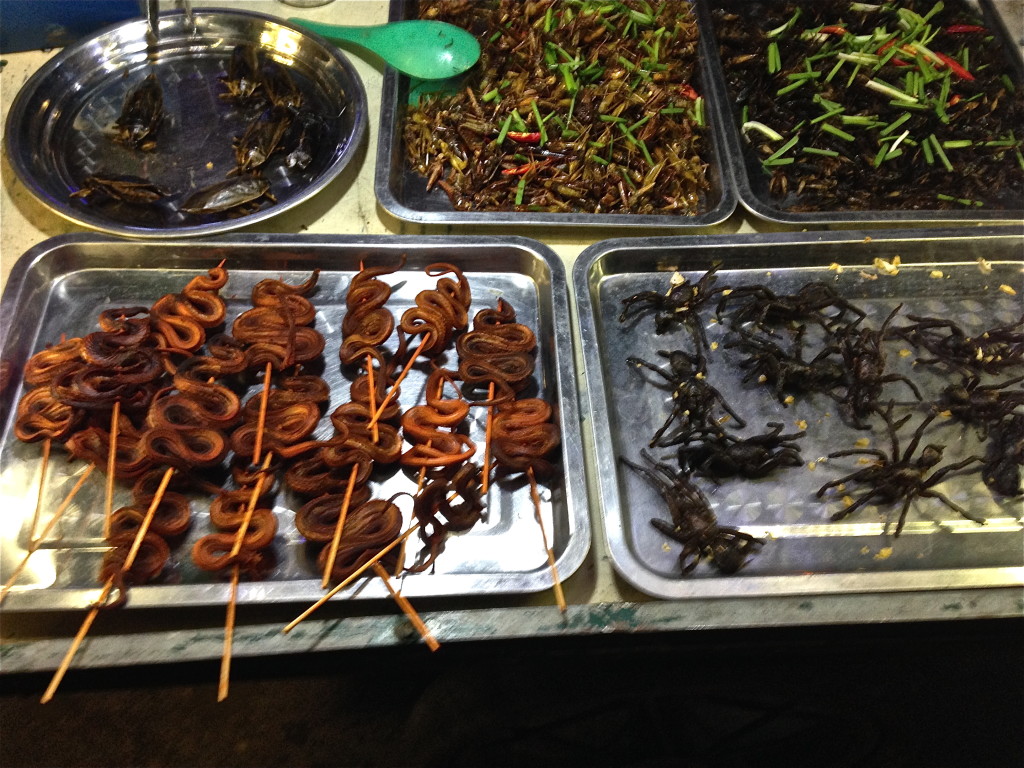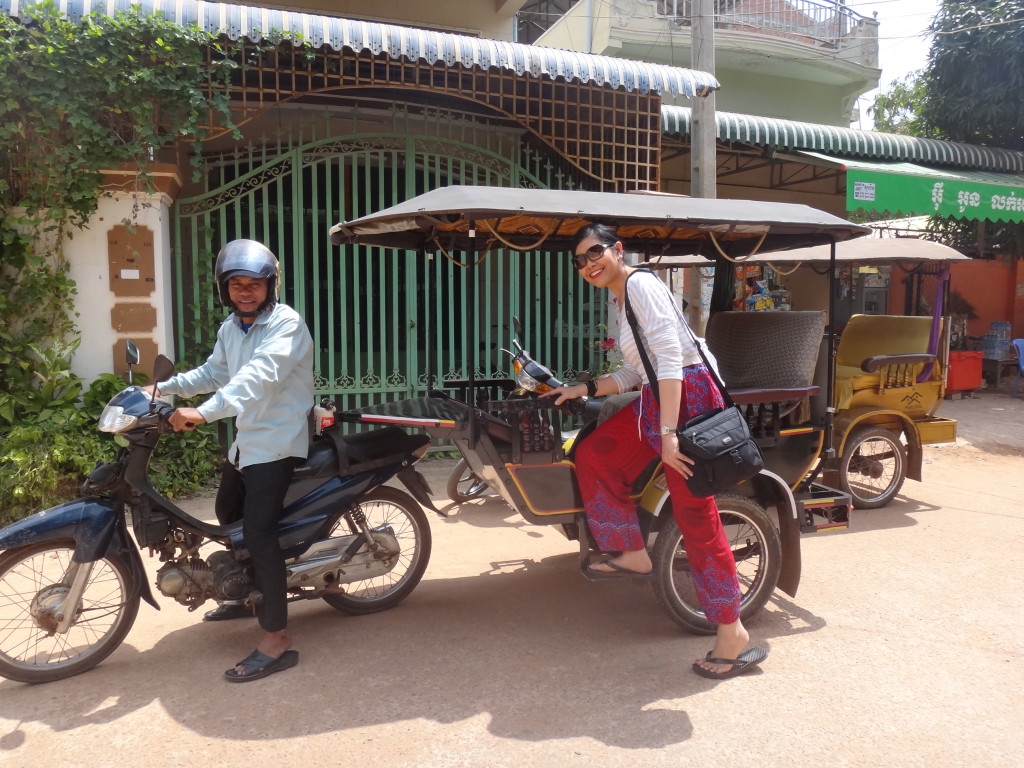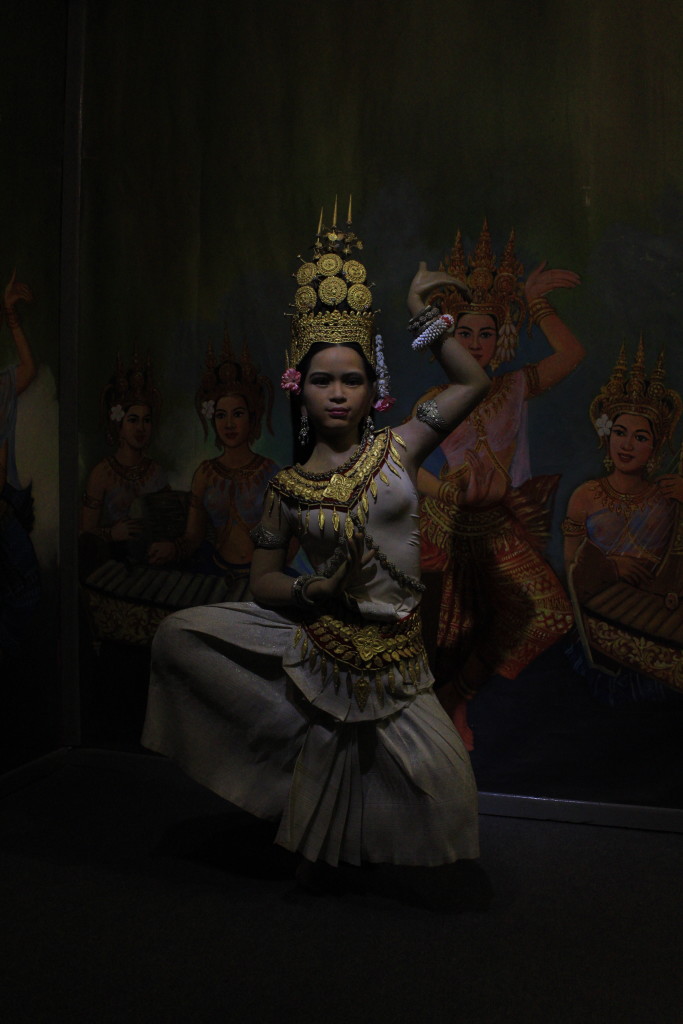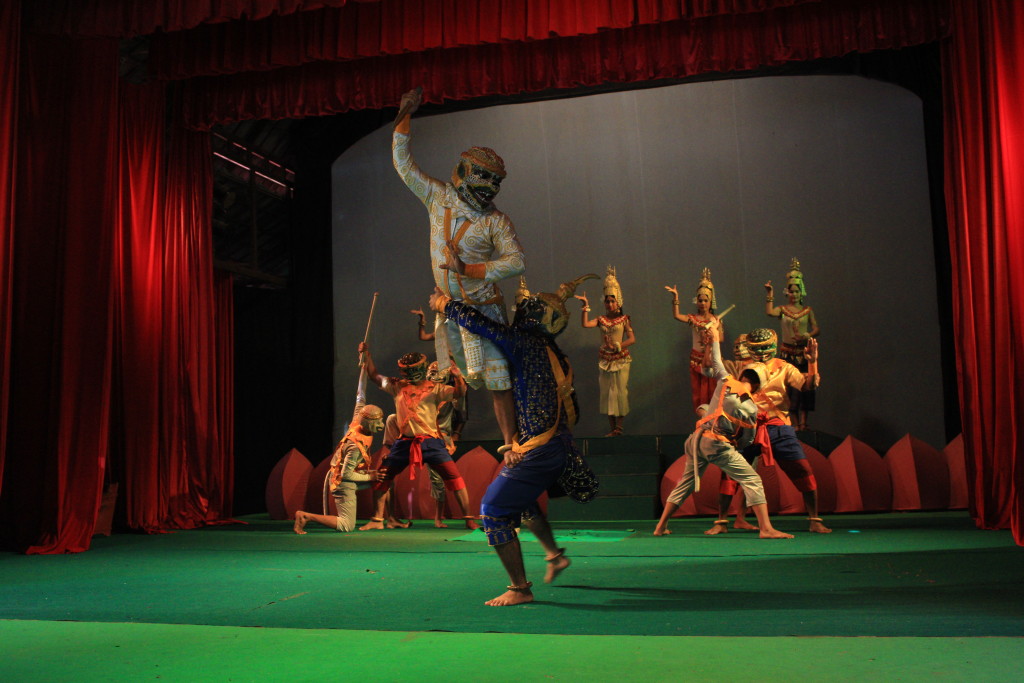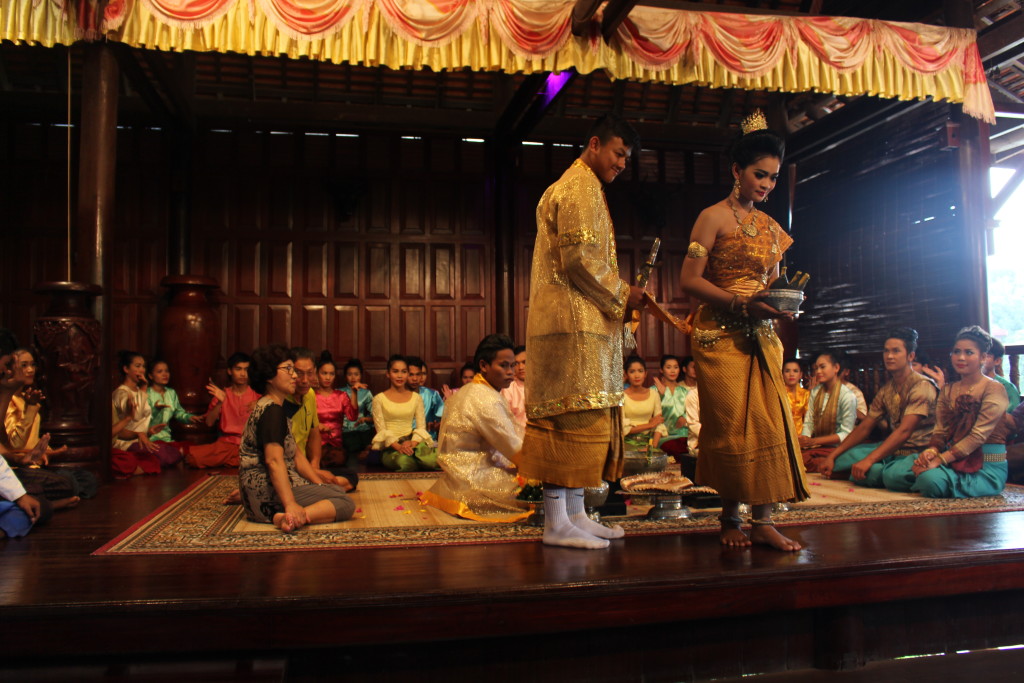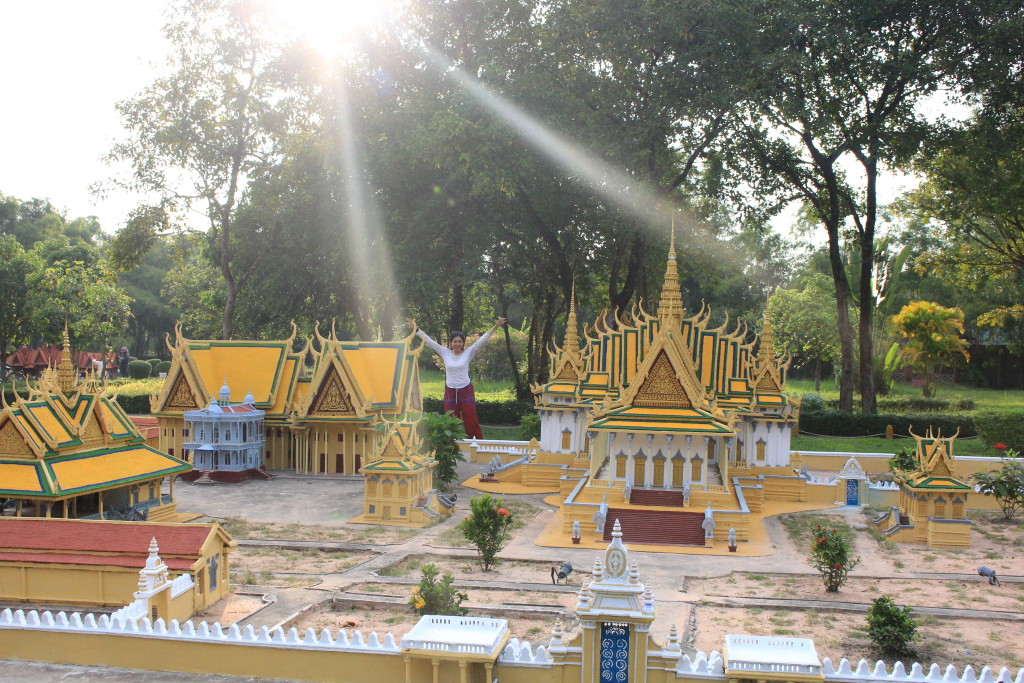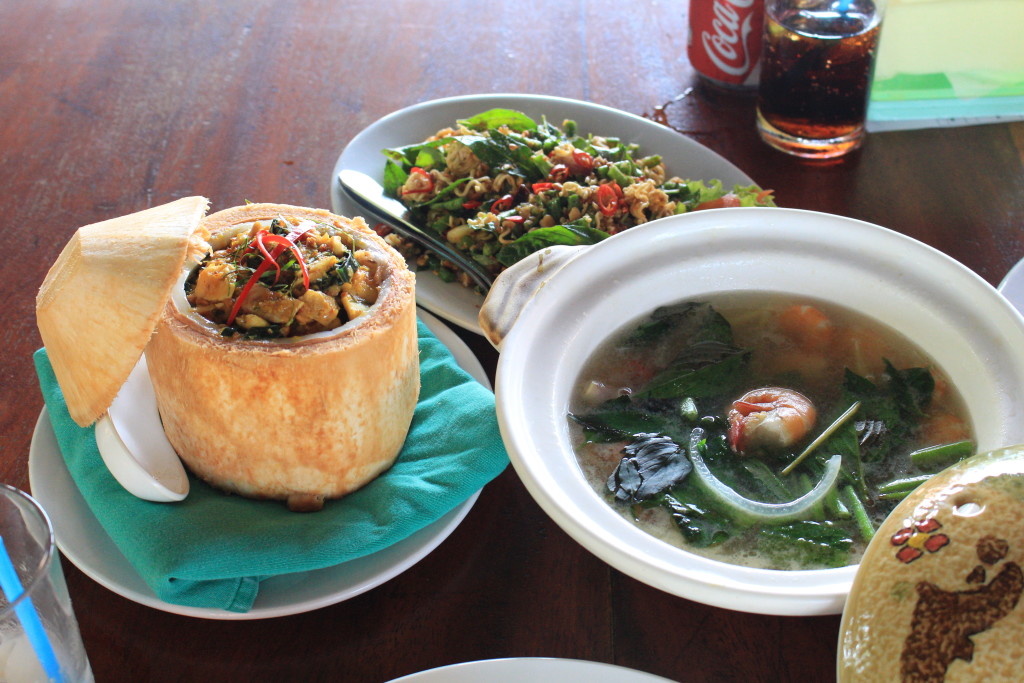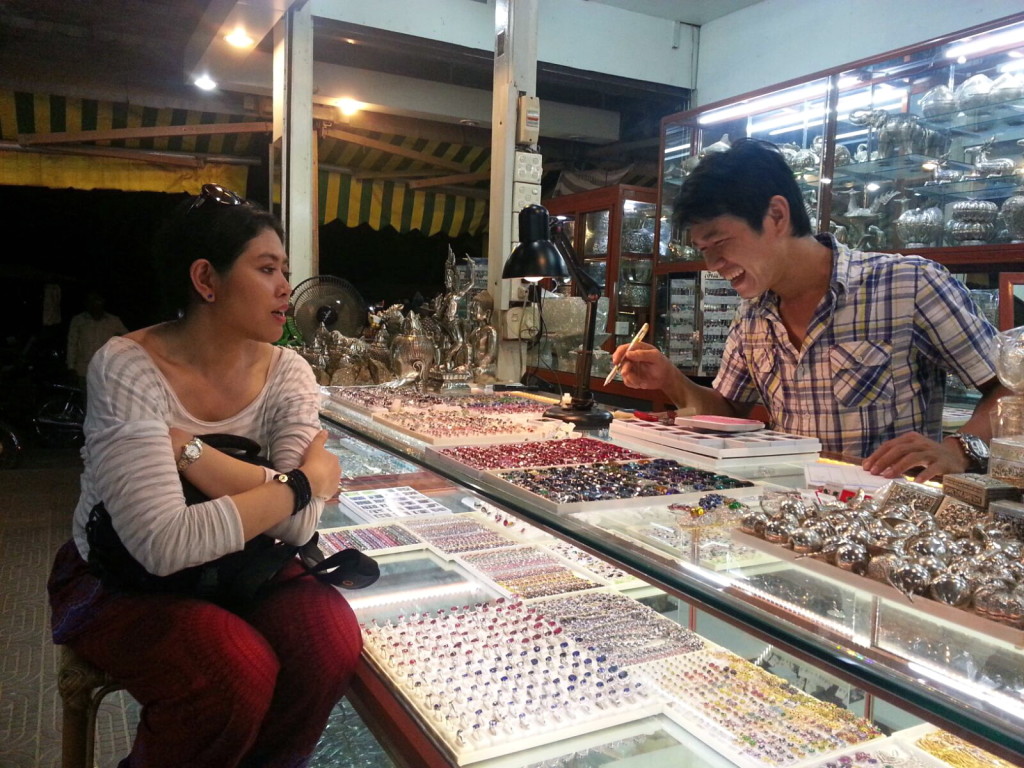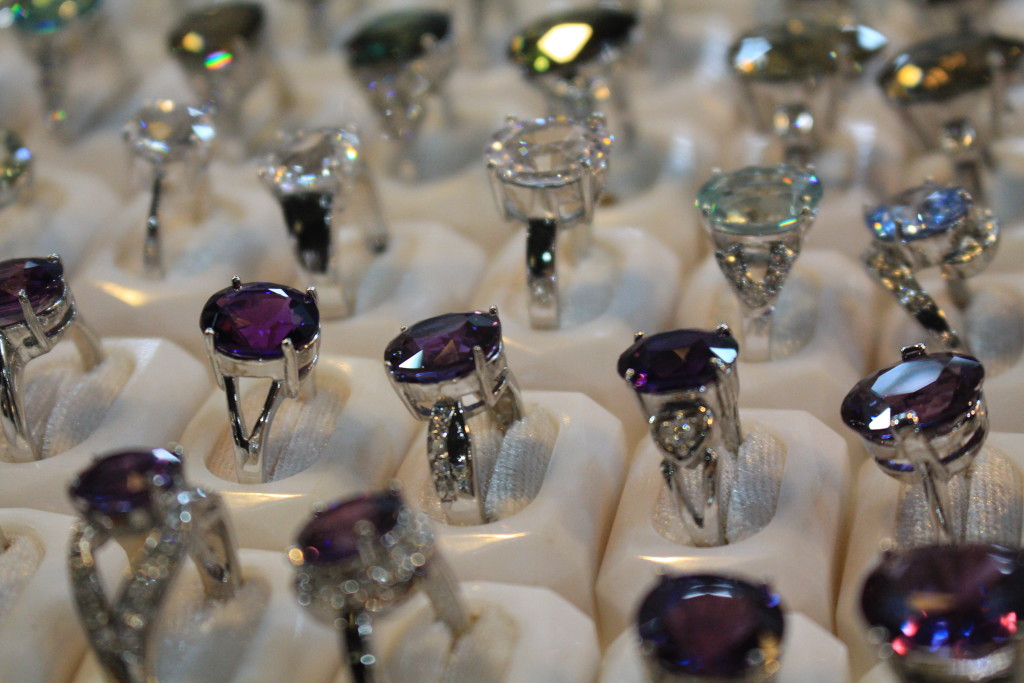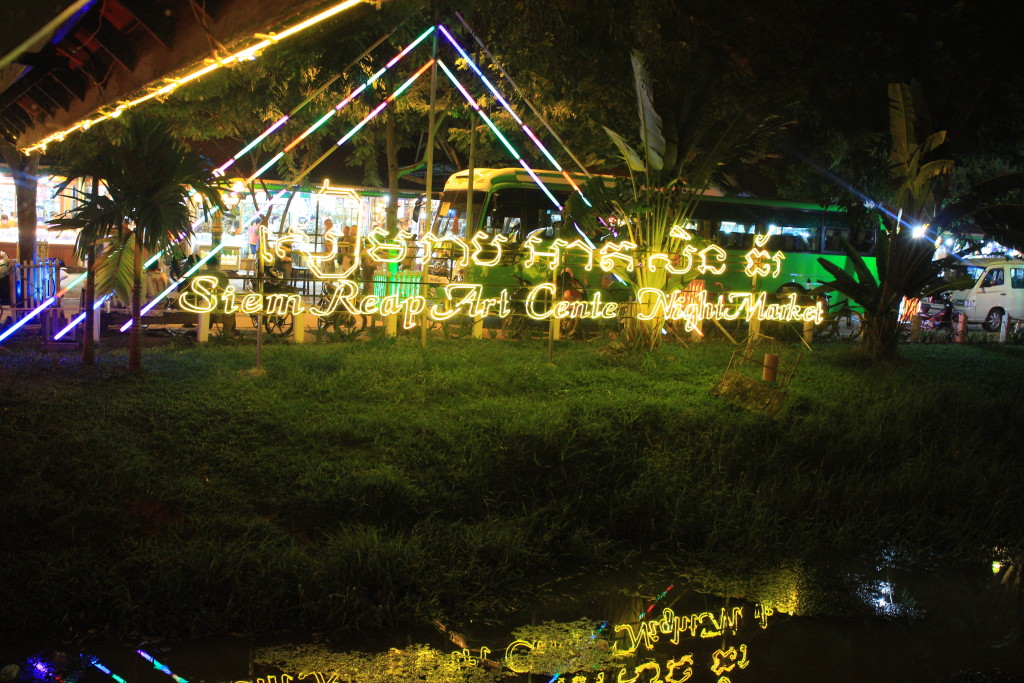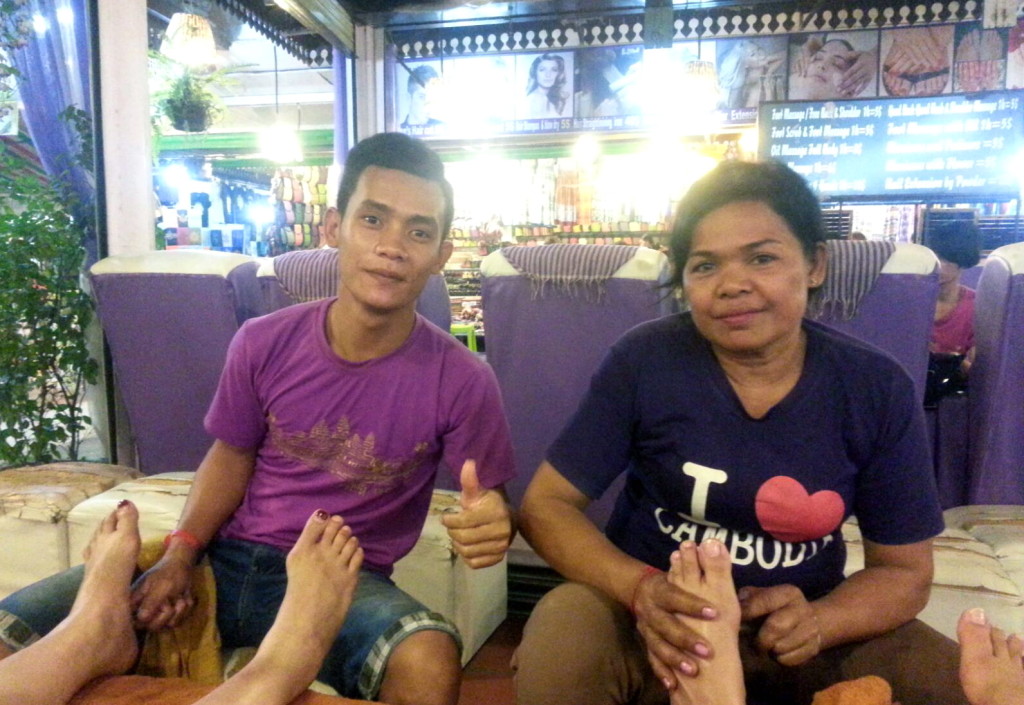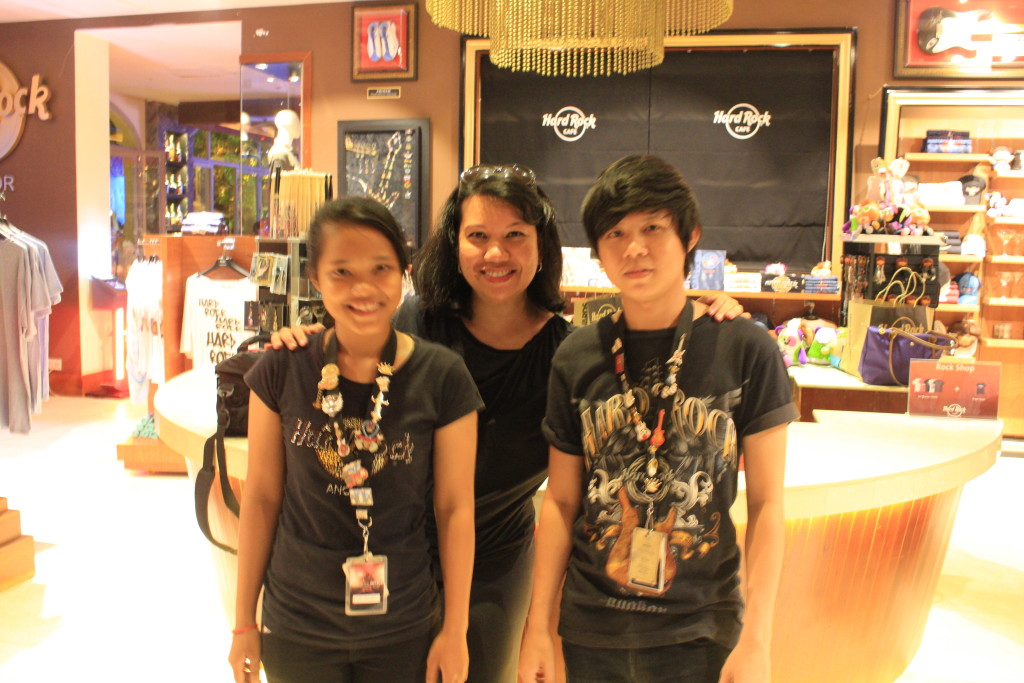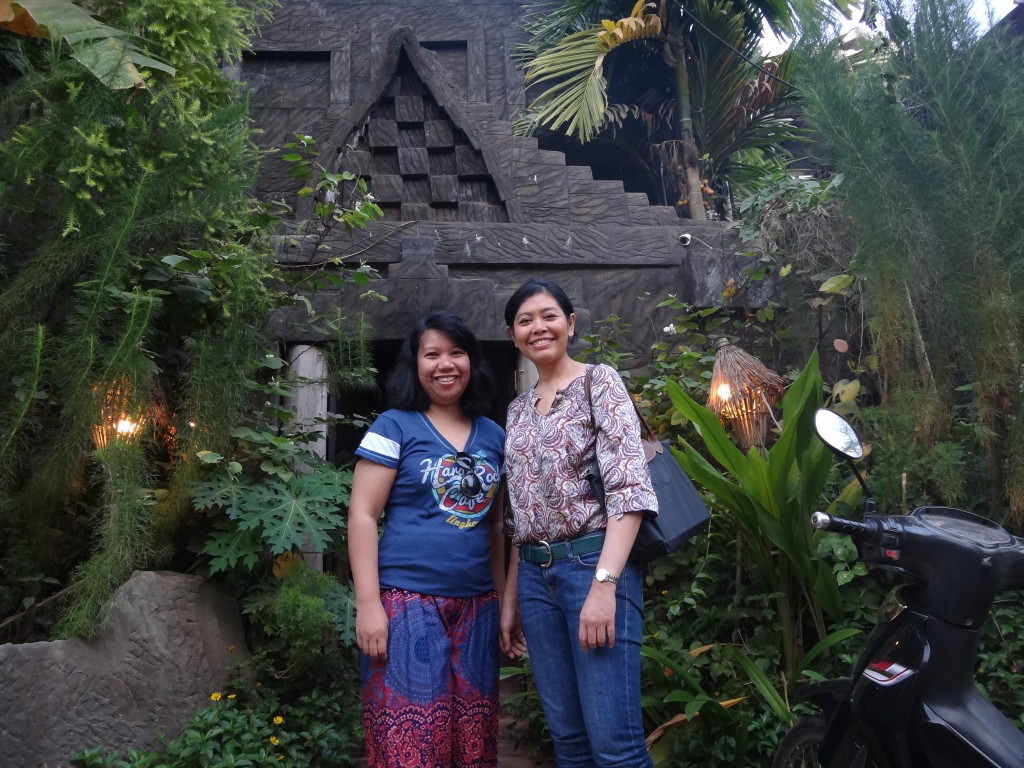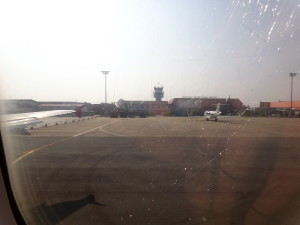Seeing Angkor Wat has been on my bucket list for as long as I can remember. For some reason, back then when I was still residing in Malaysia, not many of my friends were interested to go to Cambodia (WHY?) and those who were, had no time, money or both. After moving to London, a visit to Cambodia had to be planned alongside a trip home to Malaysia for the average 14 hour flight (one way) to even make sense – a feat that I’ve never managed to accomplish until now.
For this trip, my bestie cleared her busy schedule to accompany me. It was a last minute plan. We bought the tickets 13 hours before our departure time – a good excuse to escape from the terrible haze that is engulfing Malaysia, courtesy of our Indonesian neighbour. Indonesia, stop this open buring non-sense please!
Considering both of us had busy schedules, we decided a 3 day trip will have to do. Technically, it’s 4D3N but our return flight was an early morning flight where we couldn’t do much besides waking up and getting ready before we had to head to the airport.
So what can you do in Siem Reap in 3 days? Lots. Here’s what we did.
Day 1: Tuesday, October 20
At 03:15 my alarm went off. Urgh!!! Is it already time to get up?? It was surely an effort to even open my eyes. Slightly after 04:00, with our bags in the car boot we headed to the airport to catch our 06:50 flight.
The flight from Kuala Lumpur to Siem Reap took 2 hours but Cambodia is 1 hour behind. We touched down at Siem Reap International Airport at 07:50, local time. Despite being an international airport, it is relatively small. We got off the plane and walked the short distance to the airport building.
Immigration clearance, etc was quick. In all the reviews I’d read about Cambodia, people said that the Cambodians are very friendly. My personal experience over the next 3 days proves that is generally true. I guess the immigration officers aren’t morning persons – none of them smiled. In fact, they looked pretty fierce and I find them a tad rude. Oh well, I’m on a holiday and you can’t damper my mood Mister!
Our hotel booking included a complimentary airport transfer. We expected a car to pick us up. We were in for a treat when we were picked up by a local guy on a tuk-tuk instead.
The journey from the airport to the hotel took us 20 minutes. We booked to stay at Petit Hotel and Spa. Yes, it is petit indeed but comfortable and cozy enough for me to declare it our crib for the next 3 days. Location-wise, it’s very good indeed: within walking distance to Phsar Chas and Pub Street i.e. very central. We decided to have breakfast at the hotel before venturing Siem Reap and while doing so our room was made ready for us and we were allowed to do an early check-in. A good start to our stay.
A tour of the Angkor temples is a MUST-do when visiting Siem Reap but that’s reserved for the following day considering that Angkor Wat is said to be at its most beautiful at sunrise. At the recommendation of the staff, we decided to go to Kampong Phluk that day to see life on the water.
Kampong Phluk
After freshening up a bit, we headed out in our tuk-tuk. For the life of me, I can’t remember the name of our tuk-tuk driver. He doesn’t speak much of English, so it’s a shame we can’t chat more with him. Despite the fact that not everyone speaks English there, language is not a massive barrier to overcome.
The tar road soon became unpaved with potholes here and there – it was all a new experience and we were enjoying the different scenery on offer.
After about 50 minutes, the driver stopped in front of a hut and we were told that we had to buy tickets for the boat from the ticket counter. This came as a surprise as we were not told of the extra cost. Earlier, at the hotel, we were informed that the trip would cost USD20 for the two of us – which we thought was all inclusive. WRONG. The USD20 was only for the tuk-tuk. The boat ride was an extra USD25 EACH where we will be taken to see the village, the mangroves and the floating market. We definitely felt it was a rip-off but not knowing when we would come back, if ever, we still paid up. Luckily, we had cash as they don’t accept cards.
By the way, if you don’t know this (we surely weren’t aware until we got to Siem Reap) Cambodia uses dual currency: Cambodian Riel and USD, with USD being the preferred currency, at least in Siem Reap it is. Price tags are all in USD. You can still pay in Riel though. Currently, exchange rate is 1 USD: 4,000 Riel. So if you’re planning to visit Cambodia, just bring USD. It would make your life easier. What I’ve noticed though is that the Cambodians only use USD notes, not the American coins. So, if your purchase is USD2.50 and you give USD3, you will get a change of 2,000 Riel which is the equivalent of 50 cents.
We were led to a small boat and was surprised that we will be the only passengers. I could see a number of boats at the dock so I guess this is their way of sharing the income amongst them: by only taking a group of tourist each at any one time. It was a short boat ride and soon we were entering the village and could see houses built on stilts.
Instead of cars parked in front of the houses, there were boats and judging from the rowers we saw, you don’t seem to need a license to operate this particular mode of transportation here.
We saw men weaving fishing nets and kids playing in the waters, unsupervised. I suppose when you’re born in one of these villages, you can swim like a fish.
The boat driver stopped at a floating platform where we were asked to get off. We saw many women, some with children, sitting in small rowing boats. We were told that for an additional USD5 each, one of the ladies would take us on a boat ride through the mangroves. We could also have drinks and lunch, if we like. WHAT??? Another extra charge? I was pretty annoyed at that point but refrained myself from blurting a sarcastic remark. Jody however felt pity towards the local. Earlier, at the boat ticket booth, she asked the guy where all the money from the ticket sales go to. The guy told her that they themselves don’t pocket the income. The profits go back to the local community and after a glimps of how these people live, it’s hard to not feel a bit charitable. I guess I have a heart of steel and still felt we were being massively exploited. I glanced at the ladies in the boats – they were chatting away or merely staring into space whilst waiting for customers. A waste of time really. Why couldn’t they use the time to do some handicraft for example? That would surely be a better use of their time and something that could help generate side income.
On reflection, the USD10 charge for the two of us would be nothing compared to the price I paid for a gondola ride in Venice. That’s another story. At that point, I still felt cheated for all the hidden costs. In the end, we agreed to say “no” to the boat ride through the mangroves but had drinks and some lunch there. Expect a dish with rice to be around USD5-7, with drinks another USD2-3. The fish we ordered was very fresh and tasty. The price on the menu may be cheaper for you if you come from the western world but for Asian standards, it’s not cheap.
After lunch, we continued our journey to what was claimed to be the “floating market”. Boy, were we in for a big dissapointment. In my mind, I had a vision of the floating market to be similar to Cai Rang in Vietnam where boats lined up selling local produce. When we got there, there were only two boats. The ladies were selling similar goods – can drinks, junk food, cut fruits and exercise books and pencils! I really can’t help but wonder whether the floating market actually exist for the local community to trade their goods or whether it was set up recently to create another “tourist attraction”. It definitely screamed SCAM to me. Despite that, it’s hard not to feel sorry for the ladies who work under the hot sun trying to earn a living, scam or no scam. Jody asked how much were the books and pencils. The lady said “5 dollars.” She handed the lady a 5 dollar note and asked for the small packet of mango instead which cost considerably less. We spent literally 5 minutes at the floating market before we turned back and made our way home. Only when we had turned around did I realise I forgot to take any photo of the “floating market”!
That night, we decided to have an early night as we started the day really early and we needed to get up early the following day too for sunrise at Angkor Wat. The tuk-tuk driver said he’ll pick us up at 05:00.
Day 2: Wednesday, October 21
My alarm went off at 04:15. It took me another 10 minutes to finally get out of bed and hit the showers. At 05:00, both of us were ready but alas, no tuk-tuk in sight. After making inquiries and the receptionist making a few calls, a tuk-tuk appeared in front of the hotel in what was less than 5 minutes. It was a different driver but we didn’t question much since by then it was already 05:15 and we were told the day before that sunrise is at 05:30. On the way to Angkor Wat, we stopped by the ticket booth to purchase our tickets. Admission fee to the temples cost USD20 per person for one day and USD40 per person for 3 days. Considering we had limited time, the plan was to fit in all the temple visits in one day, so we settled for a day ticket.
For a visit to the Angkor temples, my advice would be:
- Wear comfortable walking shoes – there are lots of steps to climb.
- Siem Reap has tropical climate. Generally, it’s hot throughout the year, so dress appropriately. Cotton would probably be best.
- You are visiting religious sites, hence dress respectfully. To enter some of the holiest parts of the temple like the central tower, no off shoulder/spaghetti string tops are allowed and pants/skirts will need to cover the knee. You can’t wear a hat too. I find the dress code to be similar to entering churches.
- You will find many locals selling scarfs, pants, books, etc. They can be very persistent. They may claim that their prices are cheaper than the markets in town since they do not need to pay for rental – I don’t think so. You can get similar prices in town, some items may even be cheaper. So if there is something that you really like, buy. If not, just say a firm but polite “no” and walk away. It will save you the hassle of having to carry around the items you bought the entire day.
- Don’t forget to wear your sunscreen!
Angkor Wat
By the time we reached Angkor Wat, the sky was already turning red. We joined in the hundreds of other tourists who were already there to watch the magnificent sunrise at Angkor Wat.
Actually, the day before, we’d arranged for a tour guide for our temple visit. Who knows what’s happened to him now. However, most of the reviews I’d read said that it’s easy enough to visit the temples on our own, so that’s what we decided to do.
Whilst we were still outside the gates of Angkor Wat taking photos, our tuk-tuk driver came, along with another bloke whom we later found out to be a guy from the hotel. He passed us a cell phone and said that someone from the hotel wanted to speak to us. So, here’s what happened.
Apparently, our tour guide was double booked. The lady on the phone apologised profusedly and said she will arrange for another tour guide to come and meet us at Angkor Wat. We said, “no, thank you” seeing that we’d already been there for 1/2 hour and had no intention of waiting another 1/2 hour outside the gates for the tour guide to arrive. We were eager to start our exploration. We were assured that since the mistake was on their part, we will not be charged the USD45 cost of the tour guide for that day.
Angkor Wat is big. You can easily spend at least 3 hours there.
By the way, Angkor Wat means “City of Temples” and was built in the early 12th century during the reign of King Suryavarman II. From what we heard the other tour guides explaining (yes, we were eavesdropping at times!), Angkor Wat was initially built as a Hindu temple for the Khmer Empire, dedicated to the Hindu god, Vishnu. It later transitioned to a Buddhist temple towards the end of the century. Angkor Wat is one of the largest religious monument in the world and is a UNESCO World Heritage site.
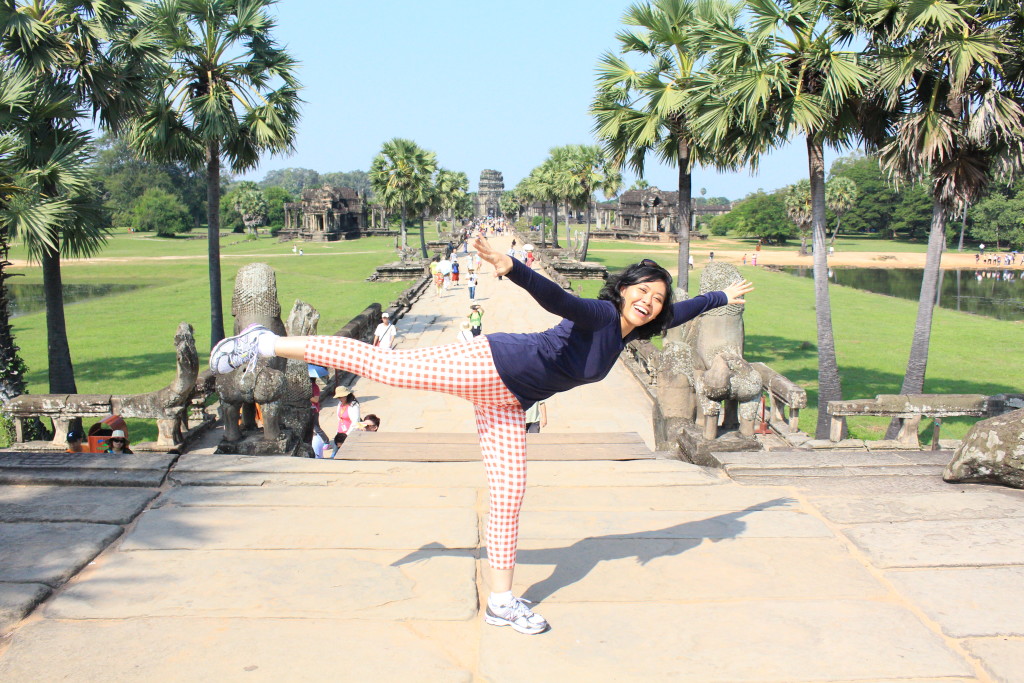
Don’t ask me why I did a skating pose in the middle of Angkor Wat! We were simply having a bit of fun.
You could also climb a steep wooden staircase to the top of the central towers and enjoy the panoramic view from up above. It opens from 07:50 and only 100 people (age 12 and above) could go up at any point in time, so expect a queue.
Nowadays, wooden staircases have been built on top of the original sandstone ones where each step is very narrow and the climb up is very steep. I can’t imagine how the monks in the olden days climb the steps daily. On rainy days, the climb must have been very slippery and made more perilous. A hard climb to heaven indeed.
After Angkor Wat we made our way back to the entrance where our tuk-tuk driver was dutifully waiting for us. We did tell him that he could do other stuff and come back to pick us up around 10:00 but he insisted he’ll wait. What a luxury to afford to do — nothing.
We spent the entire day going from temple to temple, all within Angkor Archaeological Park, only a few minutes tuk-tuk ride from one another.
Prasat Kravan
Next stop was Prasat Kravan: a much smaller temple consisting of five reddish brick towers constructed in the 10th century and also dedicated to the Hindu god, Vishnu. We spent less than 1/2 hour here as there was not much to see.
Banteay Kdei
After Prasat Kravan, we headed to Banteay Kdei, meaning “A Citadel of Chambers”. It is a Buddhist temple which was built in the 12th to 13th centuries AD. Similar to most of the temples we visited, Banteay Kdei is currently dilapidated and undergoing restoration. Whilst I knew that most of the temple scenes in the movie Lara Croft: Tomb Raider was shot at Ta Prohm, we were told that two days of filming was done at Banteay Kdei.
After Banteay Kdei, we stopped for lunch. Of course we were taken to a restaurant of the driver’s choice where he would earn a commission for taking us there but we didn’t mind. The food was good. We ordered Khmer dishes of course.
With our tummies full, we hopped on the tuk-tuk to continue our exploration of the Angkor temples.
Ta Prohm
Next, we headed to Ta Prohm and as I said earlier, this was where part of Lara Croft: Tomb Raider was filmed.
Unlike the other temples at Angkor, Ta Prohm has been left mainly as it was found. The grounds have been cleared of undergrowth and the building structure strengthened but it has been left in the stranglehold of the trees, a testament of what could happen should man-made creation be left to compete against Mother Nature.
Ta Prohm was commissioned by King Jayavarman VII in the 12th century: a Buddhist temple dedicated to the King’s mother.
Thammanon and Chau Say Tevoda
Thommanon and Chau Say Tevoda were next on our list. These temples were built across the road from each other. Both are relatively small. Thommanon was dedicated to the Hindu gods, Shiva and Vishnu and was said to be built around the same time as Angkor Wat. And whilst Chau Say Tevoda was also a Hindu temple, it is thought to have been built after Thommanon.
At this point my camera’s battery life indicator turned red. Oh NO!!!
Bayon
Next stop was Angkor Thom to visit Bayon. Angkor Thom means “The Great City”. Built by King Jayavarman VII, it is the last of the capital city of the Khmer Empire. We entered Angkor Thom via the Victory Gate. Angkor Thom covers an area of 9 square kilometers, surrounded by walls and a moat and can be accessed via four gates at each of the cardinal points on the north, south, east and west sides from which roads lead directly to Bayon, the King’s state temple, in the centre of the city. Another gate called the Victory Gate, leads directly to the Royal Palace is located parallel to the East Gate.
We entered Bayon from the northern side and exited on the southern side.
Bayon is famous for the massive stone faces carved to the side of the towers. You will need to go through some tight and dark passages. There was a point when we though we had gotten lost before finally finding the staircase to go to the upper level.
Phnom Bakheng
The last temple on our agenda was Phnom Bakheng which is famous for its sunset; so famous that you will see a flock of tourists heading that way just before sunset. Phnom Bakheng is a mountain temple where to reach the base of the temple, you will have to climb a winding path surrounded by lush forest. From the base of the temple, you have to climb a steep wooden staircase to get to the the top. When we got there, it was already 17:00 and sunset’s at 17:30. We got in the queue which was already long. Only then did we realise that there are limited passes handed out as at any point in time, only 300 people are allowed at the top. At that point, we weren’t sure whether we’d get to the front of the queue in time but since we were already there, we thought, what the heck, let’s just try. Luck was on our side. We were perhaps one of the last people to be allowed to go to the top of the temple.
At around 17:30, the guards ushered the tourist to climb down as they were closing. There is no electricity here so don’t expect floodlights to light up the area when the sun goes down. Soon after, it became dark and we found our way back to the tuk-tuk under the moonlight.
When we got back to the hotel, another surprise awaited: our room wasn’t made up. Great! I informed reception and they said they will look into the matter. After about 1/2 hour and no action, Jody went back to check. She was told that we did not drop off our room key at the reception on our way out so the cleaners couldn’t enter our room. Hello!?! We were never told that we had to drop off our keys!!! To make the story short, the cleaners did come to clean up the room that night (even though we requested for only clean towels).
Pub Street
After the room was sorted, we got ready to have dinner in town. If nightlife is your thing, head to Pub Street where like its name, you will find many pubs as well as restaurants and cafes. You may also be interested with what some of the street vendors are selling, especially those selling the exotics – I dare you! Moi? Thanks, but for now, no thanks.
Day 3: Thursday, October 22
I slept deeply through the night (totally exhausted!) and only woke up at 08:30 to the noise from the construction works next door. We still had one full day in Siem Reap and really didn’t know what to do. The more interesting places like Banteay Srei, Beng Mealea and the National Park were outside of Siem Reap and we didn’t feel we wanted to spend a few hours on the road. After surfing the internet, we decided to go to the Cambodian Cultural Village and later walk around the Old Market/Pub Street area to check out some souvenirs to bring back home.
The Cambodian Cultural Village
The Cambodian Cultural Village is probably half way between our hotel and the airport.
So how was it? It deserves a “just OK” rating from me. You won’t miss much if you skip this to be honest. The visit to the Cultural Village starts with a wax museum and includes homes of the different ethnic groups in Cambodia as well as miniature replicas of their landmark buildings. There are also cultural shows and dances throughout the day. Quoting Lonely Planet, it says the Cultural Village to be “kitsch and kooky”. I think they got that spot-on. Remember, tickets can only be purchased by cash. Admittance fee is UDS15 per person. Honestly, what I enjoyed most from our visit to the Cultural Village was not the cultural shows but our lunch at the floating restaurant.
Later, we asked the tuk-tuk driver to drop us off at Phsar Chas (Old Market) and insisted that he made his way home. We could walk the short distance back to the hotel.
Phsar Chas
Phsar Chas is a local market. It’s a combination of both dry and wet market and ran the gamut, from souvenir trinkets to crickets. You can even find bling bling there.
Semi-precious stones are quite cheap in Cambodia and we couldn’t resist getting a few ourselves.
As with other markets and when purchasing from the street sellers, you will tend to meet a few sellers who want to suck the money out of you just because you’re a foreigner. Don’t be shy to haggle – it’s expected. The sellers won’t sell to you at a loss but remember, it’s their source of income, so be fair.
Siem Reap Art Centre Night Market
We stumbled upon this market the day before and wanted to check out the massage place. It’s located along the river adjacent to the wooden roof covered bridge.
After a day of climbing up and down the temple steps yesterday, we felt we deserve a foot massage. It was not a fancy establishment but for USD5 for an hour foot massage, plus a free neck and shoulder massage, it was a steal. Our massage therapists were really chatty and kept us entertained.
Hard Rock Cafe, Siem Reap
On our way back to the hotel, we stopped by Hard Rock Cafe since Jody wanted to get their t-shirt. It’s an Asian thing. We’re obsess with HRC merchandise and would tend to get a souvenir or two from HRCs in cities we visited. I used to be one of them – I’ve passed that phase now.
Day 4: Friday, October 23
Another early morning for us as we had a 08:35 plane to catch. But before we left, there was still time for one more photo!
All in all, the trip wasn’t perfect but we made the most out of it and still had a blast! For me, my trip to Siem Reap meant:
Angkor Wat: Check. Been there, done that.
Bye-bye Siem Reap. Next time I visit Cambodia, I plan to head out to Phnom Penh to see the Killing Fields.
—–
Air Asia fly non-stop to Siem Reap daily – a 2 hour flight from Kuala Lumpur.
